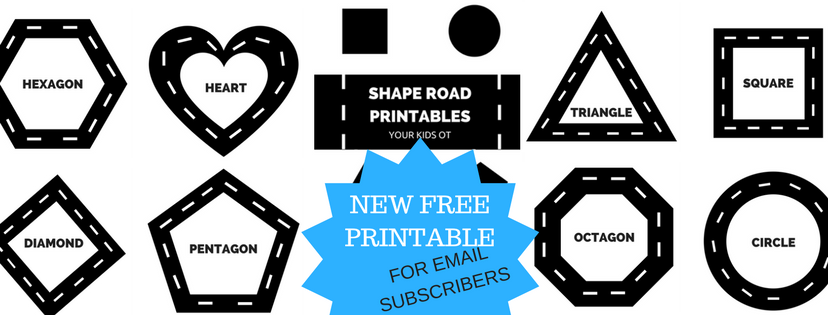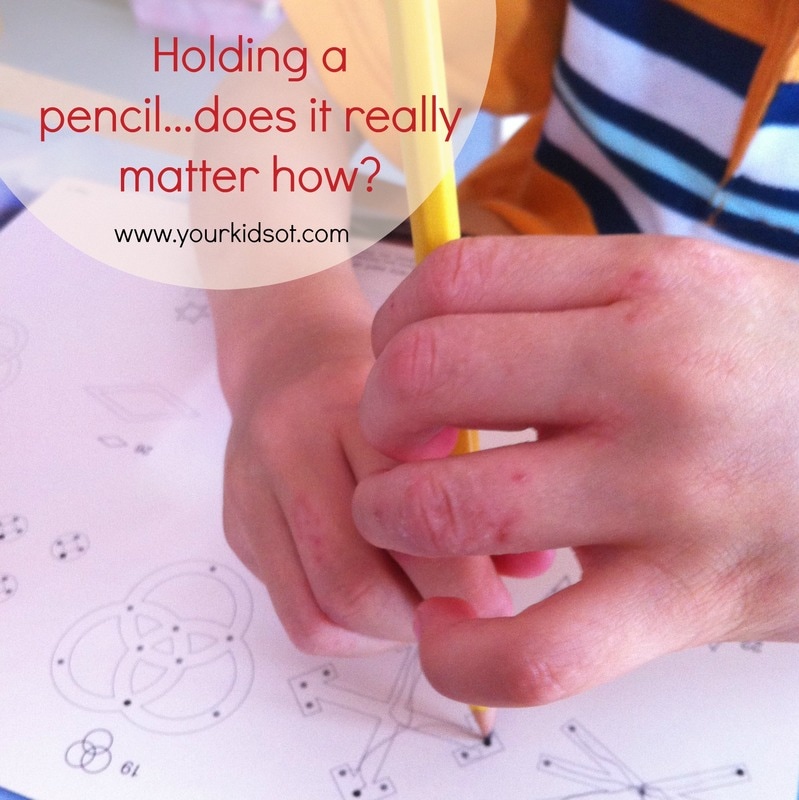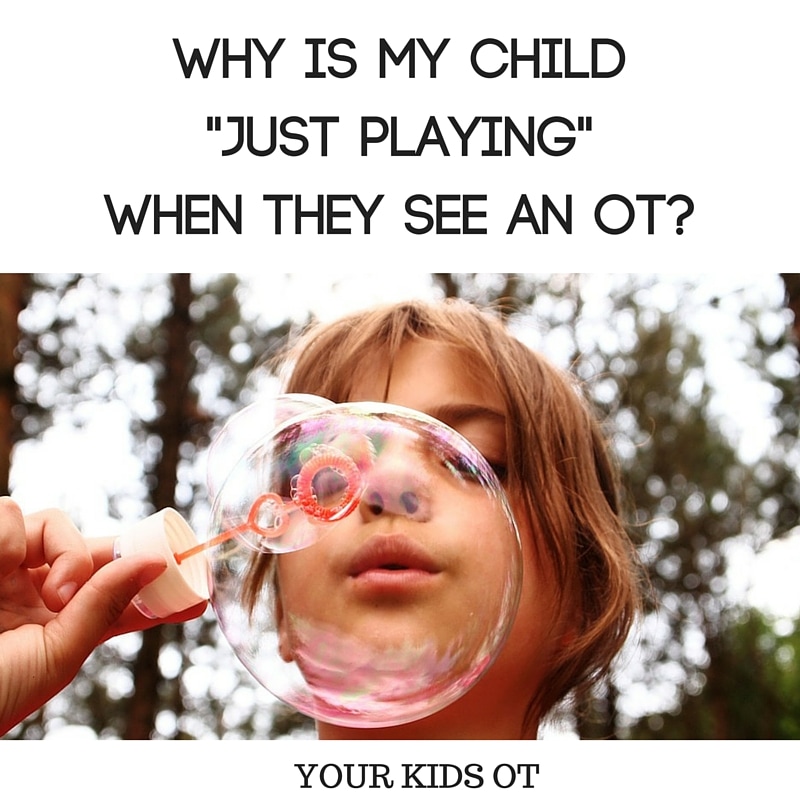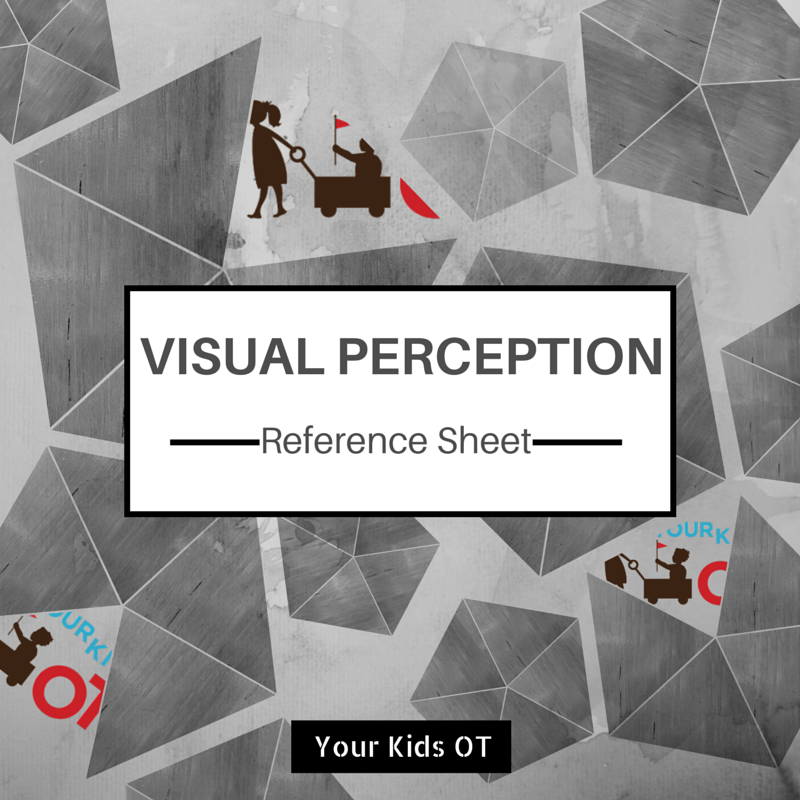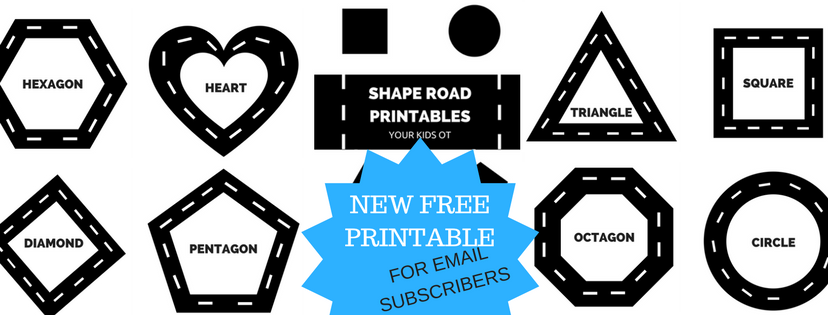|
Have you ever seen a meerkat on look out? The sentry meerkat stands on its hind legs, often using its tail as support, or perch in a bush or tree, scanning for danger. Alert. Ready to react. They freeze in position, call out and retreat quickly. They can't do anything else when they have this role. It doesn't take much for the alarm bells to start ringing. While our sensory sensitive children are not exactly like sentinal meerkats, I'm reminded that they may react more quickly and more intensely than others to sensory information. Their internal "alarm bells" are ready to sound at any moment. They have a low neurological threshold, so it doesn't take much external stimuli to affect this person. We can use the image of a bucket to consider that this child's bucket is small and is filled quickly. There is a level of tolerance, however this is very narrow. The child may react passively and need help to cope with stimuli. They need help to perservere with activities and cope with demands placed on them. Sensory CharacteristicshThese are some examples that may be seen in children who have sensory sensitivities. Not all children will have all characteristics. They may different levels of coping for different sensations. Parents, teachers, friends and family may have already made adjustments to help this child. Visual System: This child may be sensitive to visual stimuli such as indoor or outdoor (sun) light. They may stare intensely at objects of people. They may watch everyone when they move around the room. They may be aware of changing visual information. In the classroom; this may mean that the child is aware of all the visual information on the walls, hanging across the room, on the teacher's desk, on their own desks. They may be visually aware of other students; where they are sitting, who they haven't sat with before, when they go to the bathroom, etc. They may notice the birds in the playground. They may see when the principal has sat in their regular seat on the stage. It may be distracting or overwhelming for them as they try to organise this information in their minds. Auditory System: This child may be sensitive or respond negatively to loud sounds or environments. This may include loud items like vaccum cleaners, hair dryers, lawn mowers, blenders or places like classrooms, swimming pools and shopping centres. This may also include items or places that others do not find noisy. In the classroon, children may have difficulty with multiple people speaking at the same time. They may also be sensitive to one person speaking. This child may have difficulty with background noises like appliances (fans, heaters, clocks). This child may not be affected by the noises and sounds that they themselves make. They may say things repeatedly to organize and make sense of information. Tactile System: This child may be sensitive to touch (being touched or touching certain things) and this may result in aggressive or emotional reactions. This is usually a fight/flight/freeze response which is automatic rather than a planned action. Light touch pressure can be highly sensitive. At school, this child may have difficulty standing in line or sitting on the floor with other children. They may refuse physical help (Eg. a hand to hold when walking on uneven ground, or hand over hand assistance to hold scissors). They may strongly dislike messy activities such as painting. At home, this child may be sensitive to clothing tags and seams. They may have preferences with soft furnishings like bedsheets and blankets. They may dislike grooming activities such as hair washing and cutting nails. In the community, this child may have difficulty visiting professionals such as the hair dresser, dentist or doctor; with the anticipation of physical touch. Proprioceptive and Vestibular Systems: This child may appear to be hyperactive or easily distractible, as they are drawn to the latest stimuli that presents itself. They may also be cautious about various situations, unsure how they will cope with a change in body position. They may have poor balance and may fear trying new things. This child may have difficulty participating in playgrounds (swings, slides, balance bridges, etc) which have a variety of sensory input of varying intensities (many outside of the child's control). This child may be prone to car or air sickness. They may fear riding a bike or scooter. At school, this child may be constantly moving in the classroom to pay attention to things in their environment. They may prefer to watch sports or children on playground equipment. Oral Motor System: This child may be a picky eater and sensitive to textures, tastes, the colour or smell of food. They may be sensitive to the type of toothpaste that is used of whether someone helps them to brush their teeth. Please note that these are general descriptions and characteristics. A comprehensive assessment will provide individual information on sensory sensitivities, modulation and descrimination. There has also been a link between people with sensory processing difficulties (as described by Ayres and Dunn) and Sensitive Processing Sensitivities (genetically determined tempermental or personality trait). "Although temperamental SPS and the different sensory processing patterns and disorders are not the same, they do have a low sensory threshold in common and can thus provide preliminary insight into the association between high SPS and problems in daily functioning" (Boterberg and Warryen, 2016). Highly sensitive people have a deep central nervous response to physical, emotional, social and/or sensory stimuli. They can be highly empathetic, caring of others and taking on their problems as their own. Sensory SupportsIn general, the child who exhibits a "sensor" sensory profile benefits from support from others (teachers, parents, therapists, friends) to provide sensory experiences to help a child to continue with a task and manage thresholds. The instinct is to remove sensory stimuli, however for this profile, the recommendation by Dunn is to increase discriminatory sensory input (rather than arousal input) to help organise patterns of information. This children may benefit from focusing attention on the task at hand or being in the moment. They may find predictability, repetition and routines helpful to plan and organise their brains. They may benefit from meditation and mindfulness. Therefore intervention planning may include:
Some examples of sensory supports may include: Visual System:
Auditory System:
Tactile System:
Proprioceptive and Vestibular Systems.
Oral Motor System:
With exposure and support to tolerate sensory stimuli, these children may increase their ability to cope. This may be due to cognitive reasoning (eg. I don't like the feel of sand on my feet, however if I tolerate it then I can play with my family at the beach) or a decrease in sensitivity (eg. The sand doesn't hurt as much now because I have gone every day this week). For some people, they will remain sensitive to certain stimuli and accept that. These children may enjoy repetitive play or structured leisure activities. (For example, stacking and unstacking blocks, completing puzzles, knitting, jumping on the trampoline.) They may also enjoy rhymthic activities such as swimming, dancing or drumming. The "Sensor Sensory Profile" and the "Avoider Sensory Profile", share low neurological thresholds for tolerance. The main difference between these presentations is whether they actively regulate (usually avoiding) or if they are passive with their self-regulation. They may both REACT but does the memory of a perceived threat or demand, create increased avoidance behaviour? The "Sensor Sensory Profile" and the "Bystander Sensory Profile", both have passive responses however their neurological thresholds are different. The Sensor has a small bucket which fills easily and the Bystander has a large bucket that they need help to fill. Thank you to everyone has provided feedback on the "Bystander" profile that I shared recently. Thank you for your patience as I work through creating these visual resources to help explain sensory profiles. They will eventually be made available as a pdf, so please keep in contact as I develop these. Head back to the overview of Dunn's sensory profiles, take a closer look at the Bystander and stay connected for more.  Cindy is a registered occupational therapist practising in Sydney, Australia. She has two growing children who are a constant source of inspiration and learning. Cindy loves working creatively to help children to reach their potential, finding opportunities in everyday living and making learning fun. She is also addicted to making printables (even when they take a long time to complete). Cindy is the author of the Occupational Therapy blog Your Kids OT. Read more articles from Your Kids OT at https://www.yourkidsot.com/blog Cindy is a contributing author of the Functional Skills for Kids Therapy Team. They have together published THE HANDWRITING BOOK, THE SCISSORS SKILLS BOOK and THE TOILETING BOOK. The information on this site is general in nature. The activities are safe for most children, however, you should consult an Occupational Therapist or health professional to address specific movement, sensory or other medical conditions. Affiliate links are used throughout this website to promote recommended products. Your Kids OT receives a small commission if any purchases are made through these links. Please see my disclosure policy for more details. YKOT shop: https://www.yourkidsot.com/store/c1/Featured_Products.html Teachers Pay Teachers: https://www.teacherspayteachers.com/Store/Your-Kids-Ot You Tube Channel: https://www.youtube.com/channel/UCZUz_5nYEOCkj32DiOCQo4Q/featured Facebook: https://www.facebook.com/yourkidsot Instagram: https://www.instagram.com/yourkidsot/ Pinterest: https://www.pinterest.com.au/yourkidsot/
0 Comments
We are not the only experts. Currently, I work with teachers from 9 schools and preschools. I was trying to count the number of schools that I've work at over my 26 year career and it is well over 30. I know that I have experience and expertise. It's not a case of false modesty. BUT... What I have learnt in my career, is that we are not the ONLY experts. Recommendations are easier to make than to implement. I've seen occupational therapists (and other allied health professionals) who are amazing advocates, amazing with children, making fantastic recommendations ... becoming disillusioned with working in schools, frustrated by a lack of carry over into the classroom or being asked by schools not to return. My secret to working with teachers should not be a surprise. I come from a place of respect. Respect for the work they do, respect for the experience they have (even if they are new graduates), respect for their limitations. Teachers deserve respect. They have a hard job! They face pressures of the curriculum, the classroom, parents and OTs; let alone teaching children who may not all want to be there to learn. As paediatric OTs we spend a lot of our energy connecting with our clients (our children) to provide client-centred practice. We also may work on rapport building with parents but do we have the same therapeutic relationship with teachers? Rapport comes from good communication (written, verbal, informal and formal). It comes from opportunities to develop the relationship even if it is a hello in the playground or borrowing a key! Rapport comes from empathy and connection. How can I help you? As I mentioned previously, recommendations are easier to make than to implement. When our recommendations are not implemented, we have to ask why. Are they unrealistic? Is it time? Has the teacher implemented these before? Does the teacher understand the reasons behind the recommendation? Is it practical to implement? How did we make the recommendation? When we ask the teacher ... "how can I help you"?, we are inviting collaboration, listening to their main concerns, listening to practical issues about implementation. We can ask, "what has worked for you"? "what hasn't?" Strategies to work with teachers:
"Push in".... I actually hate this expression. I know that it is widely used in some parts of the world to express a therapy style where OTs are in the classroom, providing support to the students. The term "push in" implies that we are not wanted, not needed, not valued. I hope we (OTs) are not "pushing in" but being "invited in". If we want to be valued as a profession, we need to value those whom we work with. If you are a teacher reading this blog, I would love to hear from you. How do you want occupational therapists to work with you?  Cindy is a registered occupational therapist practising in Sydney, Australia. She has two growing children who are a constant source of inspiration and learning. Cindy loves working creatively to help children to reach their potential, finding opportunities in everyday living and making learning fun. She is also addicted to making printables (even when they take a long time to complete). Cindy is the author of the Occupational Therapy blog Your Kids OT. Read more articles from Your Kids OT at https://www.yourkidsot.com/blog Cindy is a contributing author of the Functional Skills for Kids Therapy Team. They have together published THE HANDWRITING BOOK, THE SCISSORS SKILLS BOOK and THE TOILETING BOOK. The information on this site is general in nature. The activities are safe for most children, however, you should consult an Occupational Therapist or health professional to address specific movement, sensory or other medical conditions. Affiliate links are used throughout this website to promote recommended products. Your Kids OT receives a small commission if any purchases are made through these links. Please see my disclosure policy for more details. YKOT shop: https://www.yourkidsot.com/store/c1/Featured_Products.html Teachers Pay Teachers: https://www.teacherspayteachers.com/Store/Your-Kids-Ot You Tube Channel: https://www.youtube.com/channel/UCZUz_5nYEOCkj32DiOCQo4Q/featured Facebook: https://www.facebook.com/yourkidsot Instagram: https://www.instagram.com/yourkidsot/ Pinterest: https://www.pinterest.com.au/yourkidsot/ "Wait what?" This is the phrase that I think of when I think of someone who exhibits a "bystander sensory profile". We are looking at how our central nervous system manages sensory information in the world we live in. In my last blog. I provided a general overview of how Winnie Dunn describes this in her assessment (Sensory Profile-2). Head back to my last blog post for this overview. Dunn describes the "bystander sensory profile" as having low registration. Others use the term "low arousal". The child (or person) has a high sensory threshold, passive self-regulation and may miss sensory cues. To put it into more simple language, let's think of the child's central nervous system being like a bucket. These children have a large bucket and it takes more sensory information/input for them to register the information. These means that are "hypo-sensitive" to input, so they don't notice it. They are passive with their self-regulation, which means they may need help as they are not aware or seek the information for themselves. To help this child to "fill their bucket", they need sensory input with more frequency, more intensity and longer duration than other children. Bystander CharacteristicsIn the classroom, a child who may have a "bystander" sensory profile may demonstrate some of these characteristics. Visual System: This child may miss visual information such a facial expressions, words on the board, gestures or they may have trouble finding items. On the other hand, they may not be distracted by visual information in the classroom. This children may be seen wandering around the classroom, as they haven't noticed everyone else is already sitting on the floor. They may be looking in their pencil case for the eraser and don't notice that it is on the table. They may not see the visual schedule that tells them what is happening. They may not notice that the time on the clock so they ask to go to the bathroom two minutes before it is about to ring. They may not notice that the child who was asked to work with them has rolled their eyes, and they go sit with them easily. Auditory System: This child may not hear their name being called and may have difficulty listening to verbal instructions (especially if there are multiple steps). They may not be affected by environmental noises such as other people talking, clocks ticking, background music, etc. This child may be in the centre of the busy classroom and is undisturbed with the activity that is engrossing them. The teacher may have called their name multiple times and they don't notice until the child sitting next to them gives them a poke. The child may hear that they are to do a maths activity, however may miss the information to place the finished work on the teacher's desk. The child may not hear other students say "can I have a turn"? Tactile System: This child may not notice their own body signals such as cold or messy hands. They may seem to have a high pain tolerance. This recognition and response to body signals is also called interoception. On the other hand, this child may not notice other children bumping into them and can wear different textures without difficulty. This may be the child whom you notice on a really hot day is still wearing a jumper. They may come back from lunch with food over hands that they haven't washed. They may scratch themselves as they walk along the wall and not notice that they are bleeding. They may not mind joustling in a line of children waiting for the bus. Proprioceptive and Vestibular Systems: This child may be passive with movement and prefer sedentary activities. They may have low energy levels and act overly tired. They may also appear withdrawn or have poor balance. These children may have low muscle tone and poor core strength affecting their proprioceptive and vestibular systems. Movements may not affect them emotionally. These children may not notice when they are feeling unsteady and may fall over frequently. They may move slowly from the classroom to the locker room. They may not recognize that they feel dizzy spinning around until they fall over or vomit. They may notice when they bump/lean onto other people or furniture. Oral Motor System: This child may not recognize body signals such as a messy face or dribble. They may not notice if food is hot, icy, spicy or textured. This child may be disinterested in food. They neither avoid nor do they seek food. They may be slow to eat food and chew for a long time. Please note that these are general descriptions and characteristics. A comprehensive assessment will provide individual information on sensory sensitivities, modulation and descrimination. Bystander Sensory SupportsIn general, a child who exhibits a "bystander sensory profile" benefits from increased sensory input with more frequency, more intensity and for a longer duration. They will need help to do this from other people (from their family, friends and teachers). Intervention Planning may include:
Some examples of sensory supports may include... Visual System:
Auditory System:
Tactile System:
Proprioceptive and Vestibular Systems:
Oral Motor System:
 The word "sensory" has been a buzz word for a while. It seems like it has grown from OTs sharing information to a much wider interest and audience. This is great but sometimes we can be overloaded with information. My attempt here is to provide information in a practical digestable way for everyone interested. I hope that this series of blog posts will be just that. I want to share the information in a way that you may not have seen before (my own infographics). My aim is to provide a practical approach to understanding how our children process sensory information, the impact that it can have and some supports that you may try immediately. In doing this series, I've removed some of the previous resources that I have published here at Your Kids OT. I will be reviewing and updating some resources to reflect this new way that I'm presenting "sensory" information! To be continued... Stay in touch to find out about the other three sensory profiles anad more!  Cindy is a registered occupational therapist practising in Sydney, Australia. She has two growing children who are a constant source of inspiration and learning. Cindy loves working creatively to help children to reach their potential, finding opportunities in everyday living and making learning fun. She is also addicted to making printables (even when they take a long time to complete). Cindy is the author of the Occupational Therapy blog Your Kids OT. Read more articles from Your Kids OT at https://www.yourkidsot.com/blog Cindy is a contributing author of the Functional Skills for Kids Therapy Team. They have together published THE HANDWRITING BOOK, THE SCISSORS SKILLS BOOK and THE TOILETING BOOK. The information on this site is general in nature. The activities are safe for most children, however, you should consult an Occupational Therapist or health professional to address specific movement, sensory or other medical conditions. Affiliate links are used throughout this website to promote recommended products. Your Kids OT receives a small commission if any purchases are made through these links. Please see my disclosure policy for more details. YKOT shop: https://www.yourkidsot.com/store/c1/Featured_Products.html Teachers Pay Teachers: https://www.teacherspayteachers.com/Store/Your-Kids-Ot You Tube Channel: https://www.youtube.com/channel/UCZUz_5nYEOCkj32DiOCQo4Q/featured Facebook: https://www.facebook.com/yourkidsot Instagram: https://www.instagram.com/yourkidsot/ Pinterest: https://www.pinterest.com.au/yourkidsot/ Every day we are bombarded with different senses in our world. How do we respond to those senses? Do we stop to smell the roses? (I prefer peonies but also happy to smell the roses) Do we try to avoid them (walking to the other side of the street)? Did you miss the fact there were roses on your walk? Did the smell annoy you and cause you to scrunch up your face? We are all unique. This means that we all process senses in different ways. Some of our children have difficulty coping with the senses in the world they live in. It can affect their ability to get dressed, go to sleep, participate in the classroom or enjoy a walk in nature. Sometimes our bodies enjoy sensations that are calming and regulate us (I'm thinking a massage, coffee, warm shower and a warm fire for myself). We may actively seek those things as we enjoy them. We crave them to relax us. Sometimes our bodies are stressed and the demands of the enviroment (or activity) causes us to respond by avoiding them. For me that's doing filing my finger nails. I have never been for a professional manicure! Sometimes are bodies are hypervigilant and we notice everything going on around us. We may be fearful and anxious or just very alert. We may not do anything about it but those feelings are still there. I'm thinking of times when I'm alone walking at night or in a foreign country unable to speak the language. Sometimes our bodies are lethargic and we are oblivious to anything going on around us. Maybe we are focused on one thing while other things are happening around us. Maybe we ignore things that we shouldn't. We miss the train announcement telling us that the next train has been cancelled and then we board the wrong train. We don't notice how sleepy we are and keep reading in bed until we are over-tired. Don't relate to any of my examples? Remember we are all unique and we have different ways to process sensory information. In this article, I am providing an overview of Winnie Dunn's sensory framework. Winnie Dunn is the author and creator of The Sensory Profile-2. This is an assessment that is used (predominantly by occupational therapists) to help provide information about how a child (or adolescent or adult) process sensory information. Dunn describes this framework as an explanation of the "interplay between neurological thresholds and self-regulatory behavioural responses to explain how we process sensory information". There are four broad profiles, however people can experience aspects of each profile depending on the environment or the activity. For some people one profile may be significantly dominant, affecting all aspects of their life.  Bystander The "bystander" may miss sensory cues. They have a high threshold (ie. it takes a lot for them to notice) they respond passively. They may need more intense sensory experiences to register the information.  Sensor The "sensory" reacts more quickly and more intensely to sensory information. They may have a high level of awareness to their envrionment (low threshold).  Seeker The "seeker" is busier and more engaged in sensory experiences. They actively seek self-regulation and have a high threshold (can manage more input than others).  Avoider The "avoider" is more likely to retreat (active self-regulation) from unfamiliar situations and prefers environments with limited sensory input (low threshold). When is intervention required? Just because we process sensory information uniquely, doesn't mean that we all need "intervention". This depends on the affect that sensory processing has on the tasks we want to do, when it affects our daily living and functional capacity. Some intervention may be "easy". We can cut off those clothing tags so the person who is hypersensitive doesn't have to experience it. Familiarity and predictability of routines or environments can help some people process sensory information. Other people will require more intensive sensory opportunities, incorporating them into daily life. I will explore the sensory profiles more closely with a look at how they may affect our school-age children in future blogs. In the meantime, here is an infographic by Pearson Clinical with a look at framework (can you spot the typo)? For the studious, you may like to watch a presentation by Winnie Dunn "Situating sensory processing with other approaches". Do the sensory profiles reasonate with you or can you see your children in the descriptions?  Cindy is a registered occupational therapist practising in Sydney, Australia. She has two growing children who are a constant source of inspiration and learning. Cindy loves working creatively to help children to reach their potential, finding opportunities in everyday living and making learning fun. She is also addicted to making printables (even when they take a long time to complete). Cindy is the author of the Occupational Therapy blog Your Kids OT. Read more articles from Your Kids OT at https://www.yourkidsot.com/blog Cindy is a contributing author of the Functional Skills for Kids Therapy Team. They have together published THE HANDWRITING BOOK, THE SCISSORS SKILLS BOOK and THE TOILETING BOOK. The information on this site is general in nature. The activities are safe for most children, however, you should consult an Occupational Therapist or health professional to address specific movement, sensory or other medical conditions. Affiliate links are used throughout this website to promote recommended products. Your Kids OT receives a small commission if any purchases are made through these links. Please see my disclosure policy for more details. YKOT shop: https://www.yourkidsot.com/store/c1/Featured_Products.html Teachers Pay Teachers: https://www.teacherspayteachers.com/Store/Your-Kids-Ot You Tube Channel: https://www.youtube.com/channel/UCZUz_5nYEOCkj32DiOCQo4Q/featured Facebook: https://www.facebook.com/yourkidsot Instagram: https://www.instagram.com/yourkidsot/ Pinterest: https://www.pinterest.com.au/yourkidsot/ Burn out is real! It is often joked about as a "midlife crisis" but I have heard from new therapists that even after a year of working, they can feel burn out. The barriers to doing our jobs are real.
More and more therapists are considering career changes. In my study of the literature about the "Therapeutic Use of Self", I found an article by the American OT association "The OT avatar: Redefining therapeutic use of self, post pandemic". I've linked it here for your reference. The article describes the unprecendented strain of the COVID-19 pandemic on occupational therapists leading to high rates of OT burnout. This is not a uniquely OT phenomenon. You may be a teacher, speech pathologist, physiotherapist, psychologist or even a parent .... experiencing the same thoughts and feelings. Whilst as a workforce (sorry not you parents) we may just leave and find something else of meaning, it is not always easy to switch career paths or to find a new job. The article goes on to provide some practical ways to develop strategies for success. Lets take a closer look. Being self-aware is an important skill to have as a therapist. It is important to be able to reflect on our own strengths, weaknesses, triggers and traumas. How do we respond to our clients? What are out thoughts, attitudes.... what are our emotional, behavioural and physiological responses? We need to be self-aware so that we can help ourselves... protect ourselves, set boundaries, be kind to ourselves, allow ourselves to process uncomfortable feelings, prevent conflict, be objective about situations and clients. Positive coping strategies and tools can look different for individuals. The four strategies that apply to everyone (parents you are back in here) are exercise, sleep, mindfulness and work/life balance (this means taking time off). The work/life balance is the hardest to achieve here, especially if you are like me and have a hard time "switching off" the brain. I have had to adopt more concrete strategies like closing the door to my home office and not opening it on the weekends. Sometimes we need someone else to give us "permission" to set boundaries. So consider this as your permission. Take what you need:
It can also be helpful to re-frame our thinking towards aspects of work which we find tedious (but I'll delve into that one on another blog). We (as people) are built for community. Even introverts need to be with people some of the time. It is no different in our work. As a sole trader, I've often found myself being "alone". Whilst I work with people every day (teachers, other professionals, children, parents)... this is not the same as being part of an OT team. "Reinforcing our professional identity" Frye and Gigliotti (2023) explain is a restorative activity that can engage the mind and body. This can include building professional networks, working within a team, seeking supervision and participating in professional development activities. If you find yourself isolated, reach out. Find a local professional group. Find an online group. Seek supervision from peers or a mentor. It can be no surprise that "occupation-based practice" is included as a strategy. OTs are experts on occupation for our clients but what about ourselves? What act of "doing" brings satisfaction and joy? Can we use our interests and personality to our work? Of course we can. This does not mean imposing our values or disregarding the interests of our clients. If you attended my talk on the "Therapeutic Use of Self" (sorry not currently available)...you will know that being self-aware, intentional and purposeful will bring a way to develop connection with our clients in a meaningful way. Now if you made it all the way to the end of the article and you are thinking... but I'm NOT burnt out, I applaud you for persisting to the end. Did you notice the title? Go back and consider these recommendations to prevent burn out. We don't want a burnt out profession. How can you help yourself to prevent burn out? How can you support your colleagues (and parents)?  Cindy is a registered occupational therapist practising in Sydney, Australia. She has two growing children who are a constant source of inspiration and learning. Cindy loves working creatively to help children to reach their potential, finding opportunities in everyday living and making learning fun. She is also addicted to making printables (even when they take a long time to complete). Cindy is the author of the Occupational Therapy blog Your Kids OT. Read more articles from Your Kids OT at https://www.yourkidsot.com/blog Cindy is a contributing author of the Functional Skills for Kids Therapy Team. They have together published THE HANDWRITING BOOK, THE SCISSORS SKILLS BOOK and THE TOILETING BOOK. The information on this site is general in nature. The activities are safe for most children, however, you should consult an Occupational Therapist or health professional to address specific movement, sensory or other medical conditions. Affiliate links are used throughout this website to promote recommended products. Your Kids OT receives a small commission if any purchases are made through these links. Please see my disclosure policy for more details. YKOT shop: https://www.yourkidsot.com/store/c1/Featured_Products.html Teachers Pay Teachers: https://www.teacherspayteachers.com/Store/Your-Kids-Ot You Tube Channel: https://www.youtube.com/channel/UCZUz_5nYEOCkj32DiOCQo4Q/featured Facebook: https://www.facebook.com/yourkidsot Instagram: https://www.instagram.com/yourkidsot/ Pinterest: https://www.pinterest.com.au/yourkidsot/ Lego masters. Metal shop masters. Domino masters. The Big Flower Fight. Masterchef. I have a confession to make. I'm addicted to reality television "making" shows. Don't get me wrong, I love creating things myself but there is something about seeing others respond to crazy challenges that makes me smile. Over the years, I've also seen children respond to "challenges" set for them. They may not use as much engineering as the shows I've mentioned, however it has the same drive behind it. Do something within restrictions given; challenge your problem solving and creativity! Years ago, I released a really simple printable for a Lego Challenge which was well received. At the time, I also created a wikki stix challenge which I never released... until now. I've since updated it so it looks a little more modern. In this printable you will find over 100 challenges! Use them to build fine motor skillls (get those fingers working to twist, bend and shape). Encourage children to make their own image; however those children who experience motor planning difficulties or visual spatial difficulties may need you to model an example. Use the challenges to build visual spatial awareness. Copying a model is also a valuable skill. Have they placed pieces in the same position as you? Have they used the same length? Do they understand position in space (over, under, next to, behind, on top)? Use the challenges as a handwriting prompt! OTs are always looking for ways to incorporate writing into sessions. Create a scene or sequence using the wikki stix. Find wikki stix at any store which supplies "therapy resources". You may also purchase this from Amazon. Don't have wikki stix... you can still use these challenges with playdough, pipe cleaners or yarn. The wikki stix have the benefit of holding their shape and you can also stick them on vertical surfaces (especially if they are new and very tacky). So grab this WIKKI STIX CHALLENGE FREE printable from the YKOT shop. You may also like the Lego Challenge too! Don't forget to let me know if you use my free printables. Tag @Yourkidsot on social media! Happy making!  Cindy is a registered occupational therapist practising in Sydney, Australia. She has two growing children who are a constant source of inspiration and learning. Cindy loves working creatively to help children to reach their potential, finding opportunities in everyday living and making learning fun. She is also addicted to making printables (even when they take a long time to complete). Cindy is the author of the Occupational Therapy blog Your Kids OT. Read more articles from Your Kids OT at https://www.yourkidsot.com/blog Cindy is a contributing author of the Functional Skills for Kids Therapy Team. They have together published THE HANDWRITING BOOK, THE SCISSORS SKILLS BOOK and THE TOILETING BOOK. The information on this site is general in nature. The activities are safe for most children, however, you should consult an Occupational Therapist or health professional to address specific movement, sensory or other medical conditions. Affiliate links are used throughout this website to promote recommended products. Your Kids OT receives a small commission if any purchases are made through these links. Please see my disclosure policy for more details. YKOT shop: https://www.yourkidsot.com/store/c1/Featured_Products.html Teachers Pay Teachers: https://www.teacherspayteachers.com/Store/Your-Kids-Ot You Tube Channel: https://www.youtube.com/channel/UCZUz_5nYEOCkj32DiOCQo4Q/featured Facebook: https://www.facebook.com/yourkidsot Instagram: https://www.instagram.com/yourkidsot/ Pinterest: https://www.pinterest.com.au/yourkidsot/ I am brave! I am unique! I am kind! I am loved! I matter! Positive affirmations are not just "lovely sayings" or "rheteric". The research tells us that positive or self affirmations can help to reduce stress and to improve well being. They can help a person to reflect on self worth and reduce the affect of negative emotions, reduce reactivity to potential threats and improve relationship outcomes. MRI evidence suggest that certain neural pathways are increased when people practice self-affirmation tasks. I can do hard things! I can learn from my mistakes! I can make mistakes (and that's ok)! Research tells us that low self esteem in our children is linked to their behaviour and "when children feel like they can not, they will not and when they feel like they can, they will". This article also suggests eight steps to implement positive affirmations: 1) make affirmations positive, 2) keep them in the present, 3) start by making small shifts, 4) follow through with the affirmation, 5) say something that you believe, 6) place them in visible places, 7) repeat affirmations often, and 8) check in with yourself Positive affirmations can provide children with the words they can use to make shifts from negative thoughts to more positive ones. I use positive affirmations during my occupational therapy sessions to build self esteem. I have created this set of 28 designs to use with individual children, however you could also use them in a group or class. The designs are available in A4 size as well as four to a page. The four to a page version fits well with printing on sticker paper (such as this one) which a child can then peel off to stick onto cardstock or a book. I have created these positive affirmations as colouring pages which can bring some mindfulness and calming to the activity. In the photo example above, I have traced the design onto an acrylic blank board (purchased from Kmart Aust). Sharpies were used to transfer the design. This activity is great for older chidren who can customise their design and it makes a lovely display on a bedside table. They can then use this to repeat their positive affirmation each day when waking up or going to bed. I would love to see how you use these positive affirmation pages. Posters in a classroom? Printed in a book for a child? Transferred onto acrylic boards? Send me a photo via email (cindy@yourkidsot) or tag me on social media (@yourkidsot on IG, FB or Pinterest)!  Cindy is a registered occupational therapist practising in Sydney, Australia. She has two growing children who are a constant source of inspiration and learning. Cindy loves working creatively to help children to reach their potential, finding opportunities in everyday living and making learning fun. She is also addicted to making printables (even when they take a long time to complete). Cindy is the author of the Occupational Therapy blog Your Kids OT. Read more articles from Your Kids OT at https://www.yourkidsot.com/blog Cindy is a contributing author of the Functional Skills for Kids Therapy Team. They have together published THE HANDWRITING BOOK, THE SCISSORS SKILLS BOOK and THE TOILETING BOOK. The information on this site is general in nature. The activities are safe for most children, however, you should consult an Occupational Therapist or health professional to address specific movement, sensory or other medical conditions. Affiliate links are used throughout this website to promote recommended products. Your Kids OT receives a small commission if any purchases are made through these links. Please see my disclosure policy for more details. Amazon Store: https://www.amazon.com/shop/yourkidsot YKOT shop: https://www.yourkidsot.com/store/c1/Featured_Products.html Teachers Pay Teachers: https://www.teacherspayteachers.com/Store/Your-Kids-Ot You Tube Channel: https://www.youtube.com/channel/UCZUz_5nYEOCkj32DiOCQo4Q/featured Facebook: https://www.facebook.com/yourkidsot Instagram: https://www.instagram.com/yourkidsot/ Pinterest: https://www.pinterest.com.au/yourkidsot/ There has been a lot said about what makes a "good toy". Something fun? Something educational? Something to promote skills? Something interactive? I will let you in on a not-so-secret thought... the best toy is not something but someone. Children seek relationship. They are born with a need for attachment. In the early years of child development, the most valuable "toy" is the ability to interact with you as a parent. As therapists we can see the attachment children form with us too. In interacting with your children, you can become attune to their needs. Parents are the first to become aware of a baby's physical and emotional needs. By meeting the child's needs; they feel secure, safe, attached and loved. As the child develops their needs grow. Parents continue to respond and meet the needs of their child. "Attunement is our ability to be aware of and respond to our child’s needs. It is deeply connected to emotional attachment. " (Child Development Institute) In play, we can build on this attunement with our responsiveness through language, physical touch, body position, voice and non verbal communication. While there is a place for physcial toys and resources; there is also so much value in interactions between the child and adult without these things. Here are 45 ways you can play with your child. These are sometimes termed "people games" that require no equipment. Games involving physical touch are more appropriate for parents or family members.
Tips for people play!
This week I have been inspired with listening and learning from the other 20 expert speakers at the Toddler Play Conference. I have the VIP ticket which makes it easy for me to listen on Podcast (when I'm walking my dog) as well as come back to the videos at any point. Despite the name, this conference is NOT just for people working with or parents of toddlers. This is really for anyone interested in being a defender of play! From understanding the neuroscience behind play and executive function to coaching parents in child led play. There is so much to take in from amazing (easy-to-listen-to) speakers. In case you are looking for some extra hours of professional development or want the accessibility of the VIP Ticket- you can upgrade over here. It is truely value for money at $97 US for 16.5 contact hours for accredited CEUs. There is lots of bonus material including a printable workbook and posters! The price is going up on Thursday (when the conference ends in the northern hemisphere), so grab it before then! Happy playing! Until next time,  Cindy is a registered occupational therapist practising in Sydney, Australia. She has two growing children who are a constant source of inspiration and learning. Cindy loves working creatively to help children to reach their potential, finding opportunities in everyday living and making learning fun. She is also addicted to making printables (even when they take a long time to complete). Cindy is the author of the Occupational Therapy blog Your Kids OT. Read more articles from Your Kids OT at https://www.yourkidsot.com/blog Cindy is a contributing author of the Functional Skills for Kids Therapy Team. They have together published THE HANDWRITING BOOK, THE SCISSORS SKILLS BOOK and THE TOILETING BOOK. The information on this site is general in nature. The activities are safe for most children, however, you should consult an Occupational Therapist or health professional to address specific movement, sensory or other medical conditions. Affiliate links are used throughout this website to promote recommended products. Your Kids OT receives a small commission if any purchases are made through these links. Please see my disclosure policy for more details. Amazon Store: https://www.amazon.com/shop/yourkidsot YKOT shop: https://www.yourkidsot.com/store/c1/Featured_Products.html Teachers Pay Teachers: https://www.teacherspayteachers.com/Store/Your-Kids-Ot You Tube Channel: https://www.youtube.com/channel/UCZUz_5nYEOCkj32DiOCQo4Q/featured Facebook: https://www.facebook.com/yourkidsot Instagram: https://www.instagram.com/yourkidsot/ Pinterest: https://www.pinterest.com.au/yourkidsot/ The very beginning is a very good place to start. A new year seems the appropriate time to go to the "fundamentals". A parent of a potential client contacted me recently asking about occupational therapy services. Whilst I think there is an increasing awareness about occupational therapy in the community, what we do, how we can work with children... this family were not sure. They asked me if I provided speech services... which inadvertently told me that they really didn't understand what occupational therapy was all about. We use a lot of "jargon" in occupational therapy and this article aims to demystify it. Let's start at the top. Occupational therapists are interested in a person’s roles. “Occupational roles” tell us about “occupations” or “activities” that need to be performed. Being able to participate, become independent, be functional in these roles is important for a person (child’s) well-being and inclusion in society. When considering a child, some of their main “roles” (childhood occupations) include being a family member, student, friend, self-carer (looking after themselves) and player. A family member could mean being a son, daughter, sibling, niece, nephew, grandchild or dependent. There is a sense of belonging to the family and should be where a child is most securely attached, comforted and loved. As a child grows and begins to attend preschool or school, they become a member of this community. In Australia, belonging to a school means wearing a uniform with most schools having a motto and badge. These symbols unifies the school community. Within the school community, a child may also have a role within a year (grade) group and as a team member (eg. sporting team or debating team). There is usually a "house system" which unifies children across age groups to barrack for points and accolades too. As a child develops friendships, their role as a friend will also develop. This may be as a play mate where the children share time and play. This may develop into a group of friends forming a social group. The role of friendship can lead to a new sense of attachment, trust, respect, people to confide in, a confidant for others and deeper relationships. The roles of a self-carer (looking after one's self) and as a player (independently and with others) will change over time as the child develops their skills. More to come on these roles. Childhood occupations (occupational roles) is our starting place for context before we break down into activities and skills, strengths and difficulties. Occupational performance areas stem from the roles we have discussed previously. Performance areas form the functional more concrete activities that are needed to be able to fulfil a role. Self-Maintenance refers to any activity that a child needs to complete to look after themselves. This may change over time as the child gets older. It may include self care tasks such as eating (with fingers, cutlery), dressing, bathing/showering, brushing teeth, toileting, grooming (hair, nails, body odour) and tying shoe laces. A teenager may also complete tasks to manage puberty (period management, shaving) or gain independence with catching public transport or learning to drive. Productivity for a child generally refers to school based tasks as this is "work" for a child. Some people will also regard "play" as a child's work and categorize it here. School based tasks may include anything that is needed to function within a school community such as going to the appropriate classroom, following a teacher's instruction, participating in floor activities, table top activities (such as writing, drawing, cutting, mathematics, etc), moving to and from recess, participating in the playground, participating in sporting activities, attending at a school assembly, etc. The list of school based tasks is large and can be different depending on a child's age and the school they attend. Play is also complex and expectations for play may be developmental initially. Play may also be singular where a child plays independently. It may be imaginary, collaborative, sensory based, exploratory, structured and/or repetitive. Children may develop play skills such as object permanence, cause and affect, turn taking, waiting and understanding rules. Leisure infers a sense of joy and self-direction. For a child, play and leisure and productivity are all intertwined. There may not be a distinction at all (and that's ok). Children benefit from leisure to provide them autonomy, safety and pleasure. Rest refers to sleep and down time (usually less activity). A child's ability to go to sleep and stay asleep for an age-appropriate length of time is important so that they are rested for the next day! Digging deeper, components of occupational performance are those underlying skills that a child needs to participate or do the activities listed above. These performance components form the basis for many therapy interventions as there is an interplay between these components with the multiple activities. For example; we need the same underlying physical skills (such as balance and coordination) to sit in a chair at school as well as stand for dressing. Biomechanical refers to physical body skills that may include being aware of a child's muscle tone, reflexes, range of motion, strength, manipulation and coordination. These physical components may impact postural stability, balance, gross motor skills, bilateral coordination and fine motor skills. Sensory-motor refers to an awareness of a child's sensory preferences, ability to modulate their body, regulate sensory demands placed on them and perform tasks. It may require a child to manage visual perception, auditory processing, tactile stimuli, vestibular input and oral sensitivities. Cognitive skills refer to thinking and planning skills. It may include executive functioning skills such as setting goals, sequencing steps, managing time and attention. It may include problem solving and reflecting. Intrapersonal skills refer to skills a child has internally. I'm categorising "interoception" (an awareness of one's own body signals and responding appropriately, however I have also seen this categorised as a sensory system. Intrapersonal skills may also refer to self-esteem, confidence, regulation, inner drive, motivation and an awareness of one's self. Interpersonal skills refer to a child's ability to relate to others. This may include social skills, friendship skills, participating in a group, participating in a community, participating in a family, etc. The list of skills here is not definitive. You may be able to add to this list! We are to also remember that a child is seen in the context of their family, culture and community. There are environmental factors to consider as well as the child's own strengths and difficulties. The role of occupational therapy is to assist a child in any of the areas above (a huge list) and different therapists will have speciality skills in specific areas. We may look at "upskilling" a child, helping a child to "problem solve" or compensating for skills with equipment. In future articles we will take a closer look at the therapeutic relationship and client centred practice. The information provided in this article is based on the Occupational Performance Model. You can see another summary of the model HERE with a printable summary HERE. Looking for more... Did you learn something about paediatric occupational therapy in this article? Is there anything you would add?  Cindy is a registered occupational therapist practising in Sydney, Australia. She has two growing children who are a constant source of inspiration and learning. Cindy loves working creatively to help children to reach their potential, finding opportunities in everyday living and making learning fun. She is also addicted to making printables (even when they take a long time to complete). Cindy is the author of the Occupational Therapy blog Your Kids OT. Read more articles from Your Kids OT at https://www.yourkidsot.com/blog Cindy is a contributing author of the Functional Skills for Kids Therapy Team. They have together published THE HANDWRITING BOOK, THE SCISSORS SKILLS BOOK and THE TOILETING BOOK. The information on this site is general in nature. The activities are safe for most children, however, you should consult an Occupational Therapist or health professional to address specific movement, sensory or other medical conditions. Affiliate links are used throughout this website to promote recommended products. Your Kids OT receives a small commission if any purchases are made through these links. Please see my disclosure policy for more details. Amazon Store: https://www.amazon.com/shop/yourkidsot YKOT shop: https://www.yourkidsot.com/store/c1/Featured_Products.html Teachers Pay Teachers: https://www.teacherspayteachers.com/Store/Your-Kids-Ot You Tube Channel: https://www.youtube.com/channel/UCZUz_5nYEOCkj32DiOCQo4Q/featured Facebook: https://www.facebook.com/yourkidsot Instagram: https://www.instagram.com/yourkidsot/ Pinterest: https://www.pinterest.com.au/yourkidsot/ Happy Birthday to me! Your Kids OT is celebrating it's 10th Birthday! Hip hip Hooray for 10 years! As I look back on the last 10 years there are so many reflections that I want to make. The first blog article was written was published on January 31st, 2014. I was so nervous hitting the first "publish" button (even though I don't know how many other people outside my friends and family read it)! When I read back on the first blog (you can find it HERE), I outline the goals of the blog and why I wanted to start it! I think that I've pretty much achieved what I set out to achieve with Your Kids OT so that makes me incredibly proud. I'm also pleased to say that my photo quality and images (not always my own) have improved, as well as the printables that I have created! So on with the celebrations! 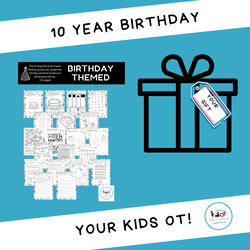 To celebrate 10 years of Your Kids OT, I have created 10 new resources! There is something here for everyone with the first printable being FREE! It's a birthday-themed printable which includes a range of worksheets suitable for all ages. It includes drawing, pre-writing shapes, pre-writing lines, cutting, hidden pictures, mazes, writing words, writing stories and persuasive writing activities. The YKOT 10th Birthday Bundle is a huge bundle of nine NEW resources created with all my current clients in mind. There is something for every age group and a broad range of referrals. You can start using them straight away ! The YKOT 10th Birthday Bundle includes: 1) Mix and Match Occupational Therapy Activities Mix and match fine motor, gross motor, oral motor, pencil control, writing and printable writing activities. There are over 130 activity ideas in this one printable alone! 2) The Wheels on the Bus Preschool Printable This printable includes visual prompts for the song which I have been using with my toddlers, preschools and other older children who have developlmental delays. It is a fantastic way to bring groups of children together in a preschool setting for inclusion and participation. There are also pre-writing pages, shape drawing and hidden picture pages in this printable. 3) Search and Find Grids I love grids and this printable is all about building visual spatial skills. Help your children to work on spatial awareness, visual discrimination, visual form constancy, eye-hand coordination, figure ground and memory skills. There are search and find pictures, map reading and hidden message grids. Ps. The hidden messages are all positive affirmations, which makes them perfect to use for emotional regulation as well as handwriting goals! 4)Story Creation Grids Thos printable includes story arc visual pages, writing planning worksheets and 15 story writing themes. Some of these themes include the circus, the beach, school and the farm. Children can seelct from who, what, when, where and why to create multiple stories with the one theme. 5) Story Board Picture Prompts This printable assists early writers to sequence 3 part narratives. There are pictures for 12 stories and 6 partial stories to fill in the gaps. Some sentence starters are included with writing templates. 6) Solve the Mystery "Who stole the cookie from the cookie jar?" Do you have difficulty engaging your child with handwriting? This printable includes handwriting, however it is not lengthy. Children love to solve the clues and work out the answer to this mystery. This was a huge hit with the children I trialled this out with last year! 7) Self Awareness for Children and Teens This printable was created for multiple reasons. Some children find it difficult to answer a straight question regarding their thoughts, feelings and preferences. Most of the questions in this printable allow children to select from a choice or rank their preferences. Children can build body and self awareness through answering questions about their relationships, routines, environment, sensory and activities. There are also pages which look at emotions and body signals. I've used this printable with children from 8 to 14 years. 8) Coding Challenge Game and Worksheets This printable also builds on grids and working on visual spatial skills. Cut out the game pieces and choose from two different boards. Children use arrows and numbers to guide characters to reach the chosen destination. They can also watch out for obstables. The printable worksheets encourage children to draw arrows from the characters to the chosen destination. 9) Handwriting True or False Game This game is in the form of a powerpoint presentation. Children answer true or false to 50 handwriting related questions. Questions cover handwriting legibility (spacing, sizing, writing on the line, punctuation, use of capital letters), letter formation, the purpose of writing and posture in a fun way! Choose the questions that are suited to your child. You could also use this game as a pre/post therapy intervention activity. I have made a physical prompt (paper plate with true on one side and false on the other) to use together with this game! An interactive way to have a pop quiz! The YKOT 10th Birthday Bundle is available for 10 days only at $19.95 ($Aust). That is a little over $2 per item (less if you are converting $US)! Offer ends Sat 10th February at 12:00 midnight (Sydney Time). Don't miss it! This is just the beginning of the 10 days of birthday celebrations so make sure you check your inboxes to see what else is happening! Head over to instagram too where I will be dropping much more including a birthday suprise that you don't want to miss!
Don't forget your party favour on your way out! |
AuthorHi, I'm Cindy and I am an Occupational Therapist. I enjoy working creatively with children to see them reach their potential. Read more about me here. SEARCH THIS SITE
Archives
June 2024
Categories
All
Popular Posts |
Join the YKOT e-newsletter!
Subscribe to get our latest content by email and receive
the SHAPE ROADS PRINTABLE NOW!

Success! Now check your email to confirm your subscription and receive your free printable!
Join our Mailing List!
Subscribe to get our latest content by email and receive
the SHAPE ROADS PRINTABLE NOW as a thankyou!

Success! Now check your email to confirm your subscription and receive your free printable!
Disclaimer: The information on this site is general in nature and should be used for educational and entertainment purposes. The activities are safe for most children, however, you should consult an Occupational Therapist or health professional to address specific movement, sensory or other medical conditions. This blog does not replace formal therapeutic professional advice given by a health professional or medical practitioner. Reviews and endorsements of products will only be made based on my expertise and personal opinion; and deemed worthy of such endorsement. The opinions shared in sponsored content will always be my own and not that of the advertising company or brand. Content, advertising space or posts will be clearly identified if paid, affiliated or sponsored. Affiliate links may be found throughout this website in advertising. This means that if you follow through with a purchase from these links, Your Kids OT will receive a percentage of the sale. Your Kids OT undertakes to meet the requirements of the "Social Media Policy" as published by Australian Health Practitioner Regulation Agency (AHPRA). Further information about this policy can be found here.
Find meFollow me |
About me
AuthorHi, I'm Cindy and I am an Occupational Therapist. I enjoy working creatively with children to see them reach their potential. Read more about me here. |
Copyright © 2017 Your Kid OT













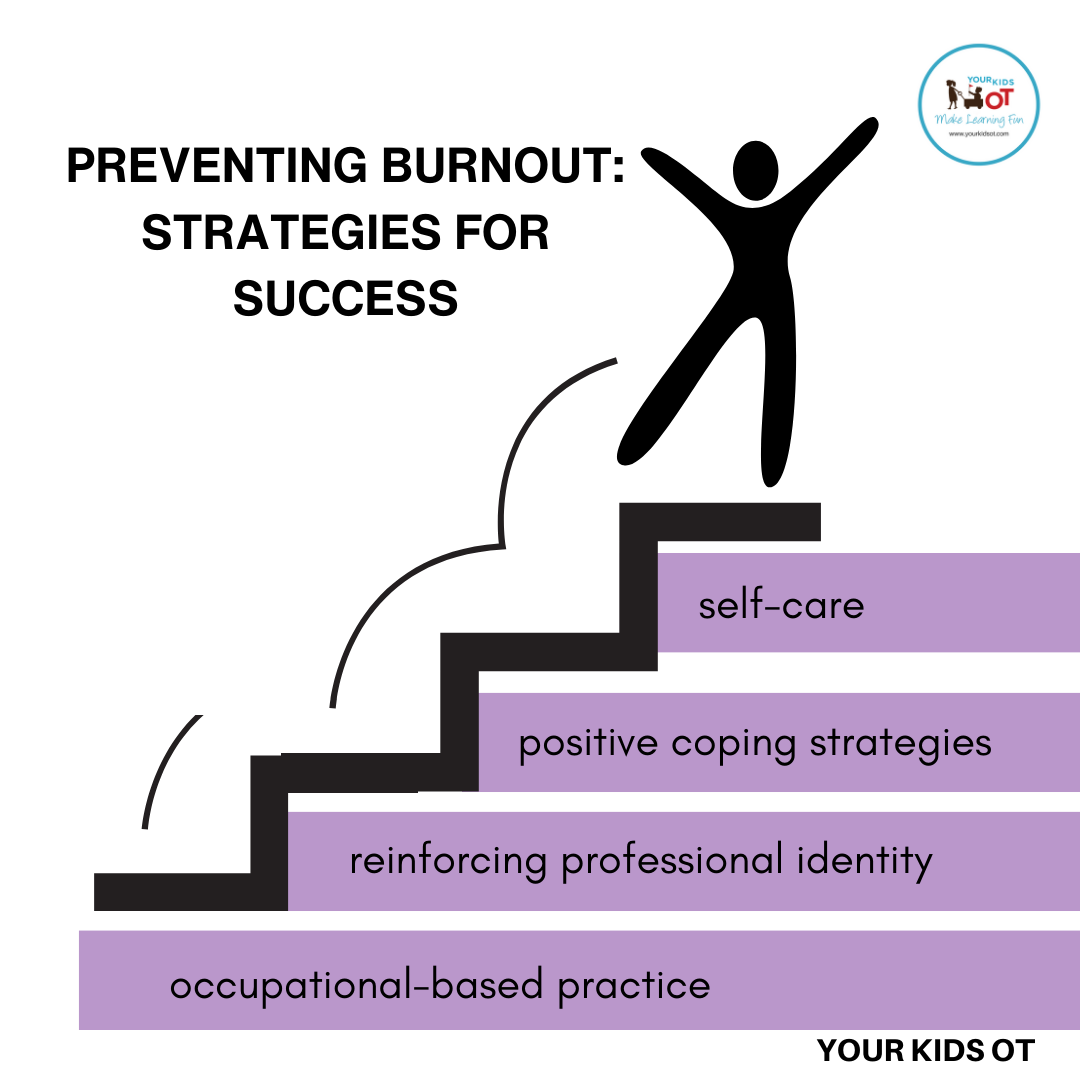
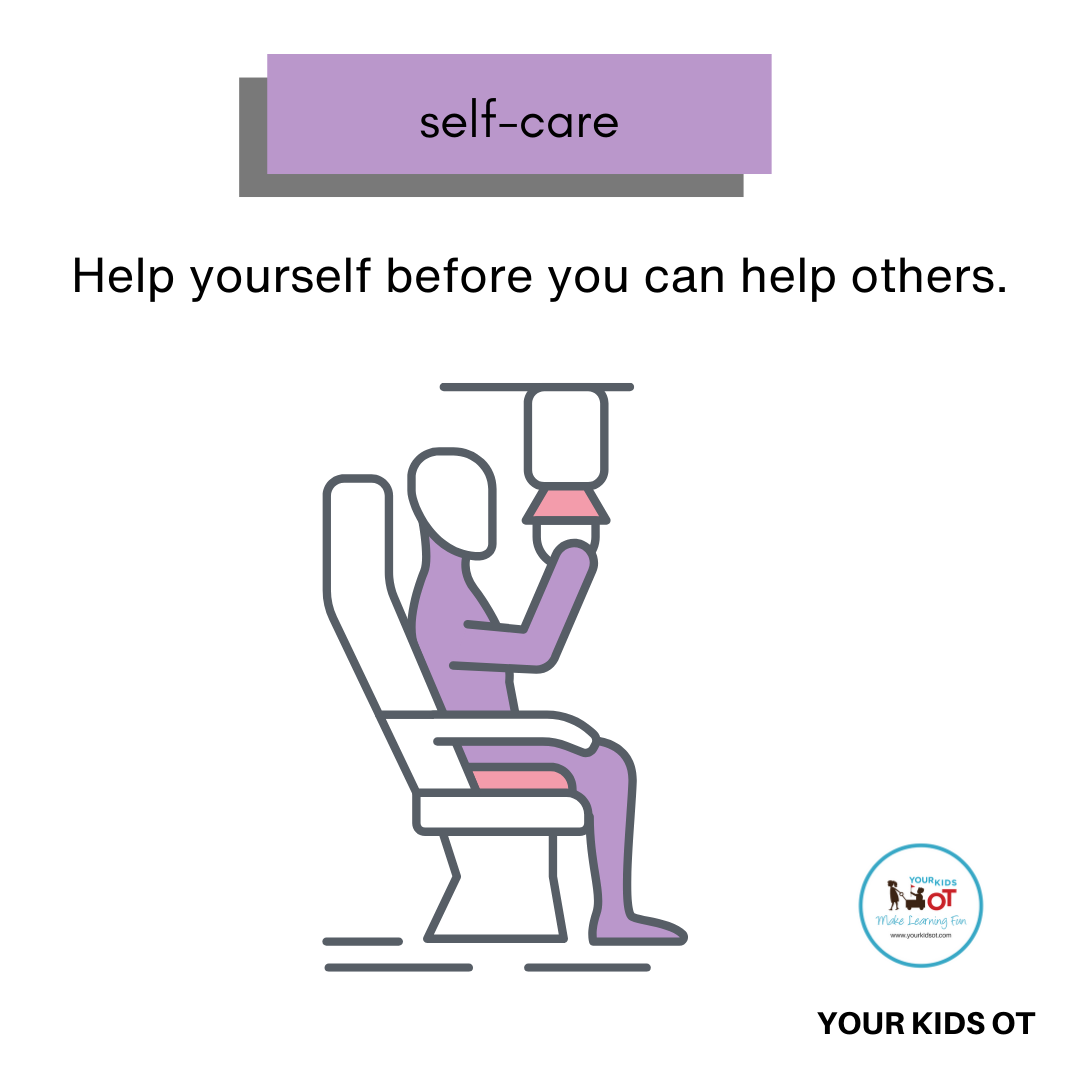
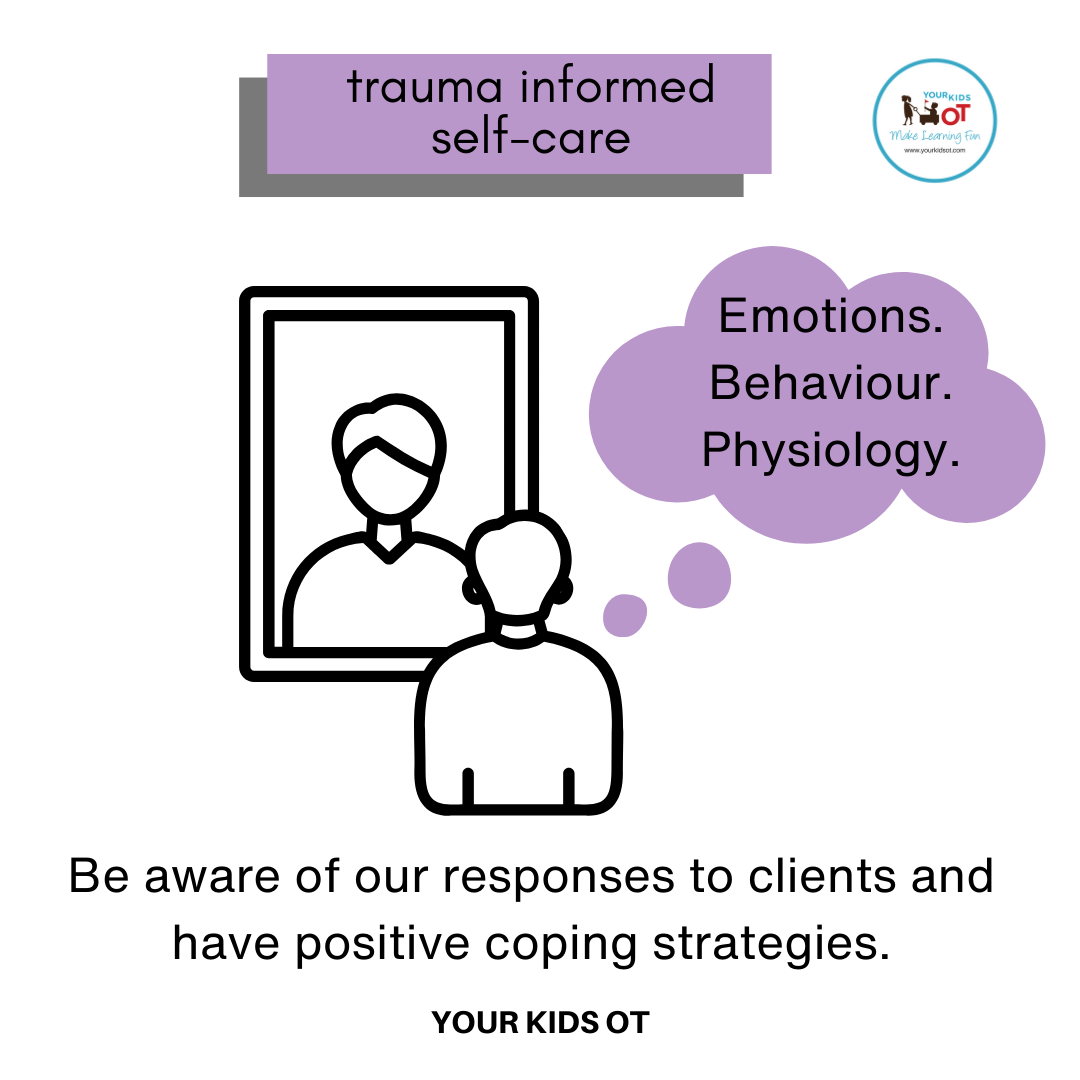
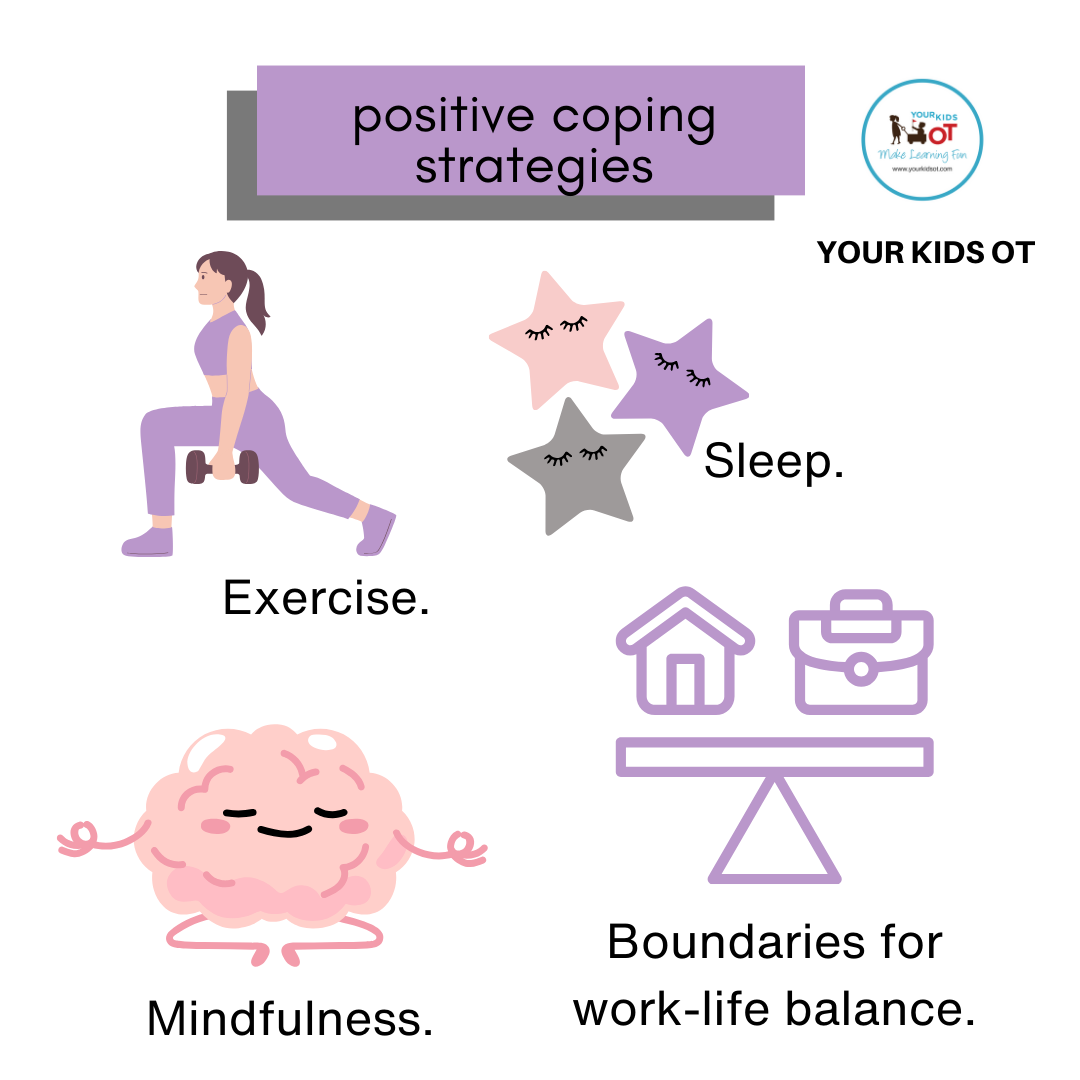
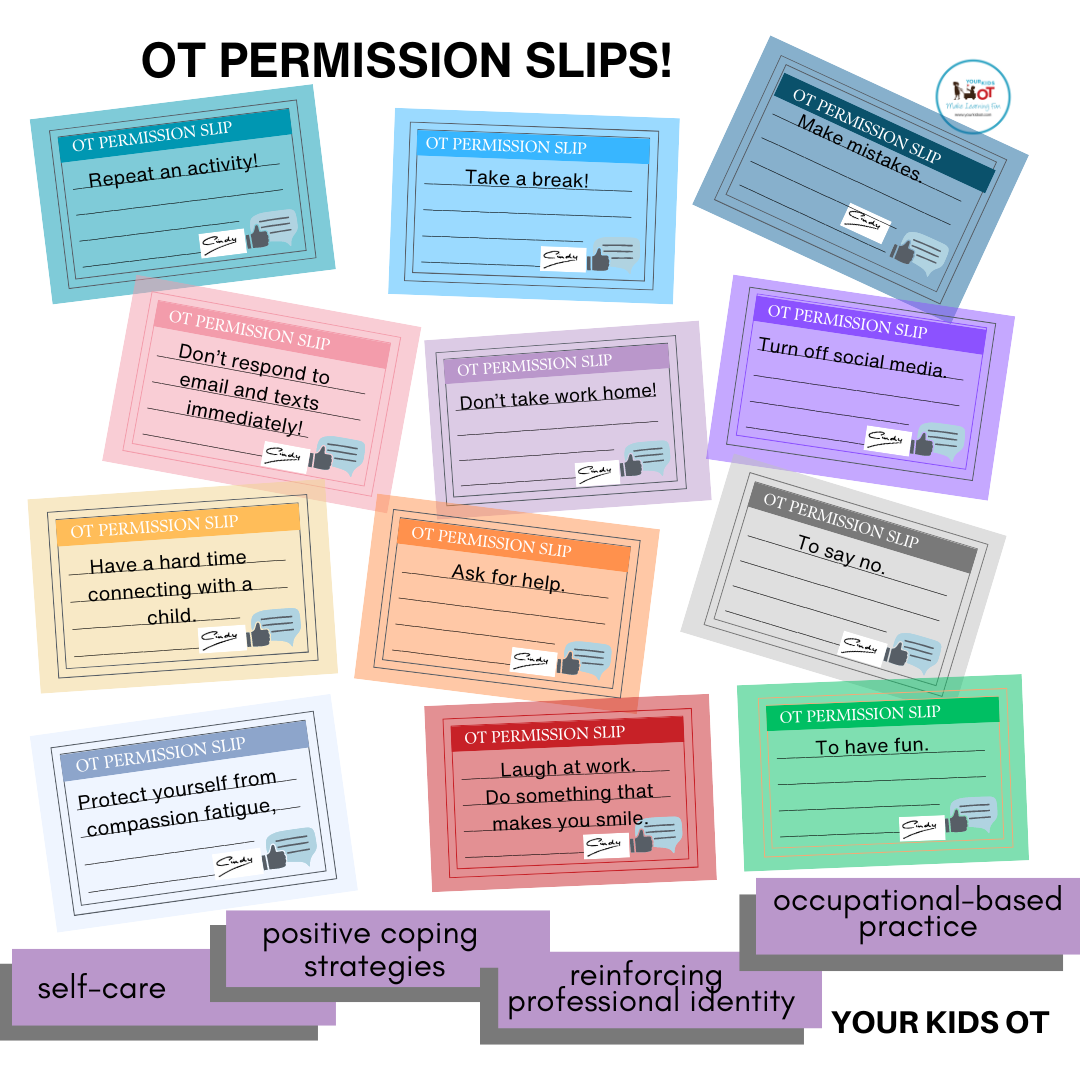
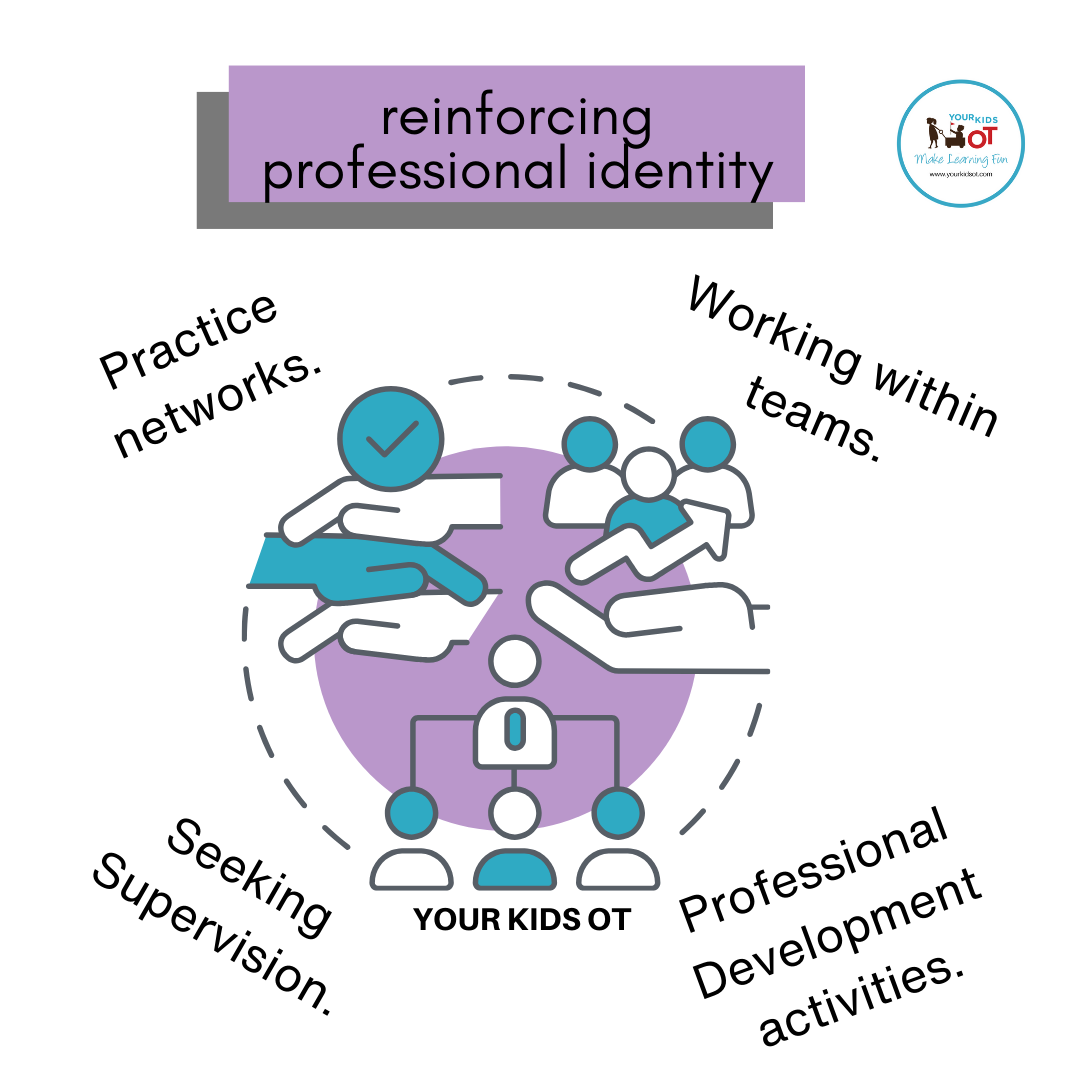
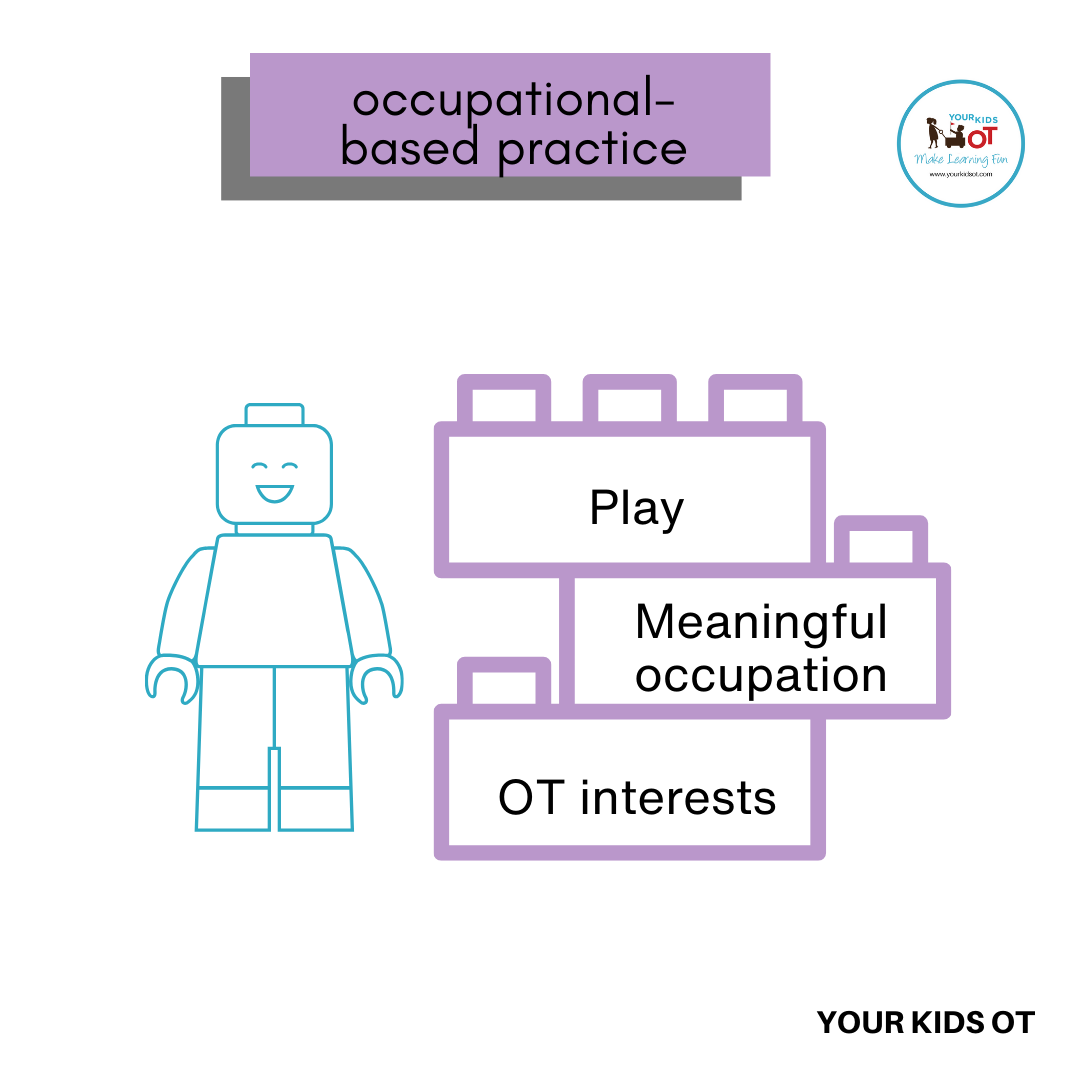

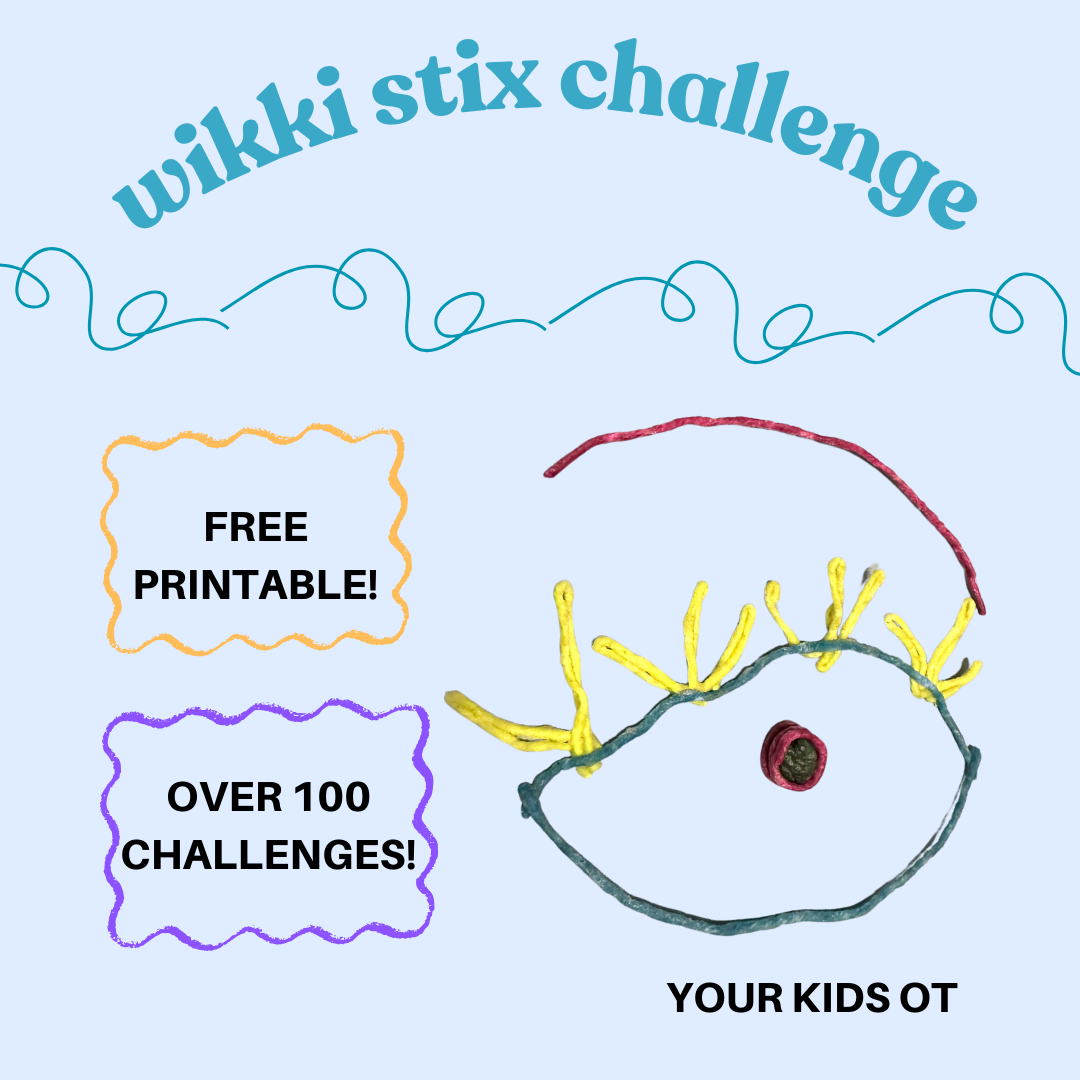
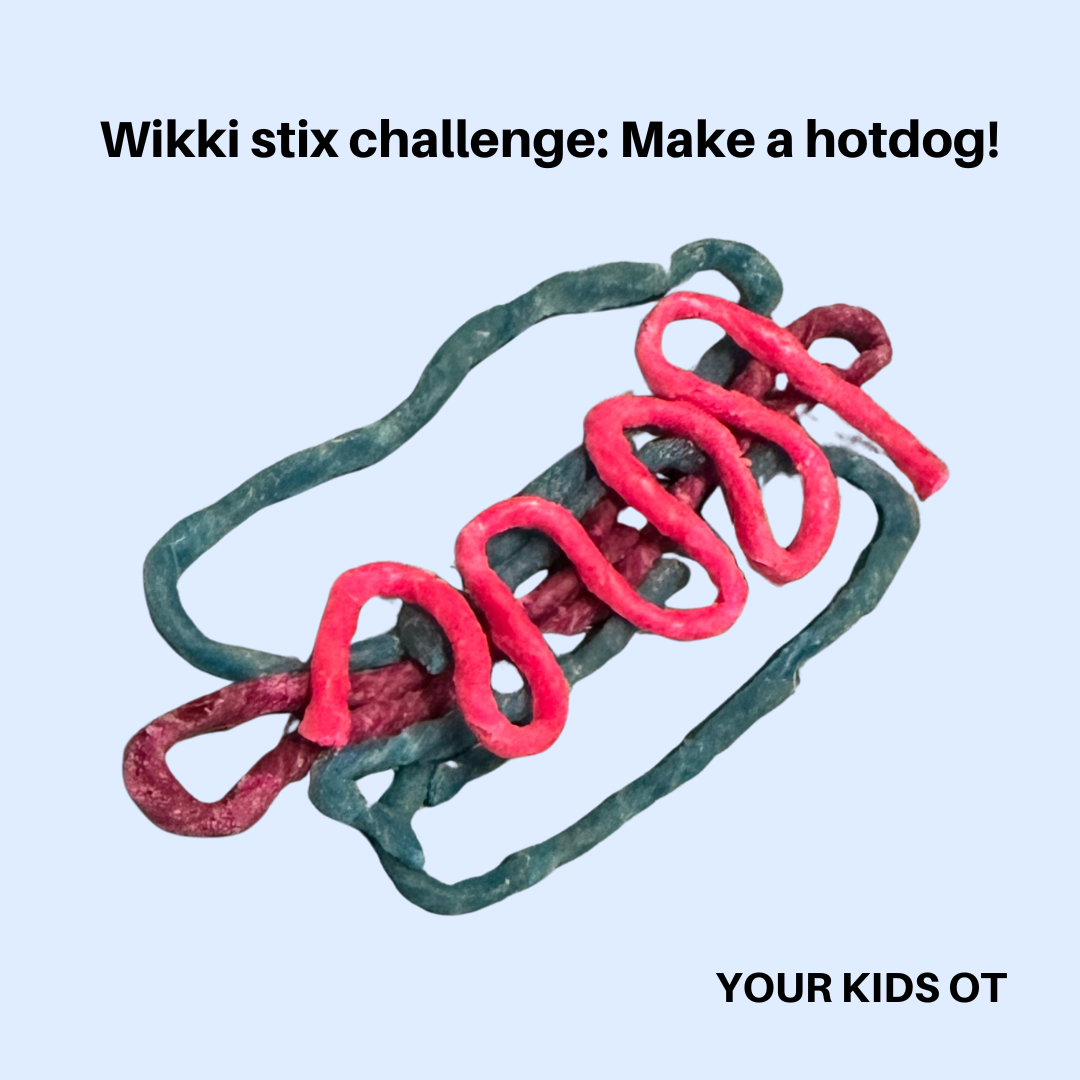

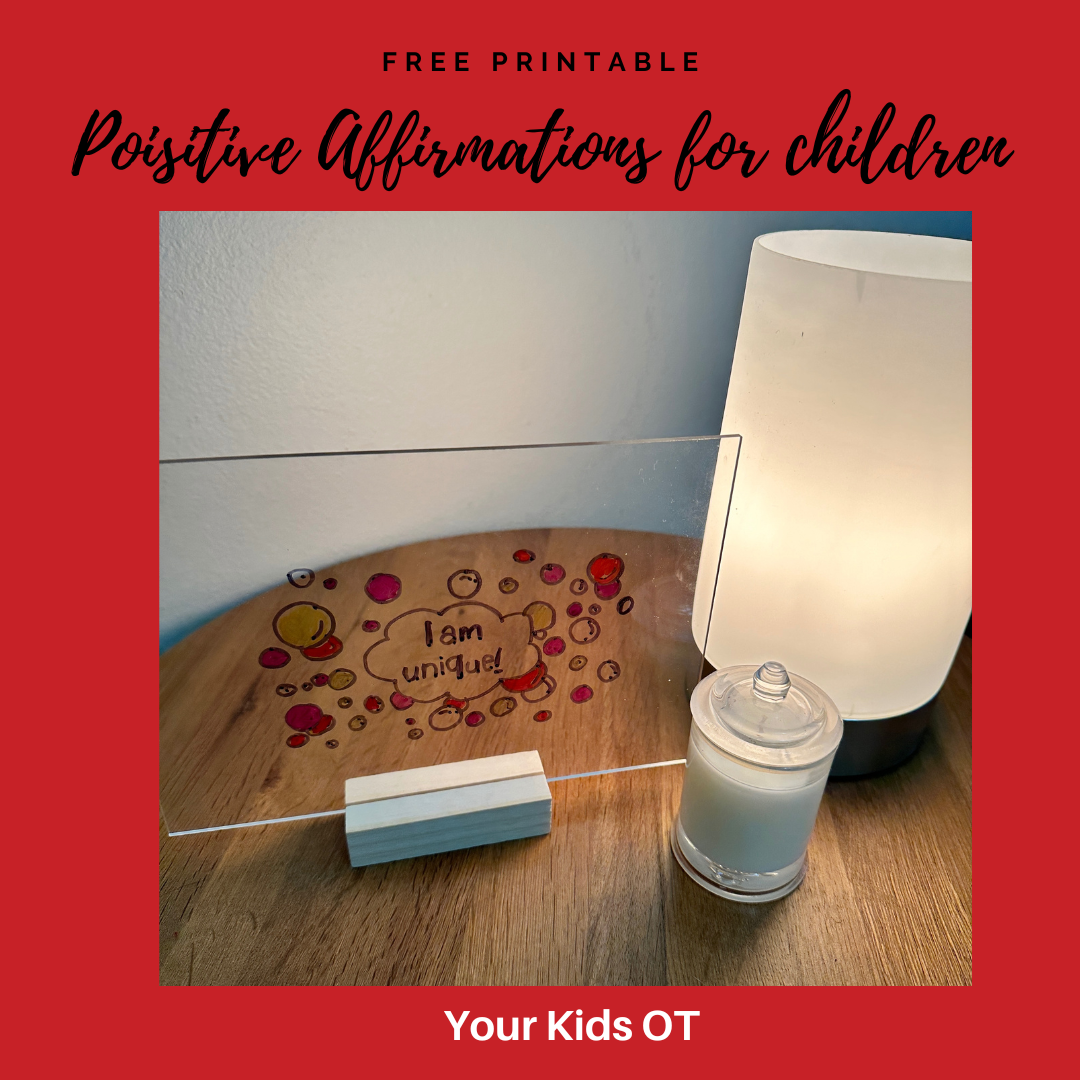
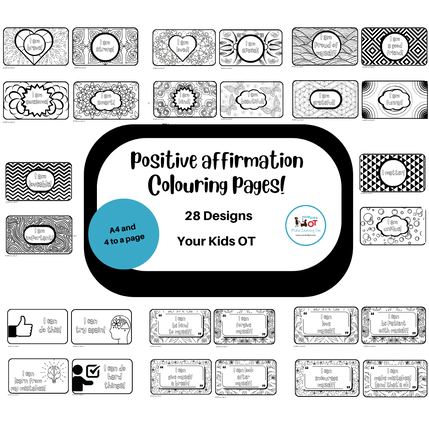
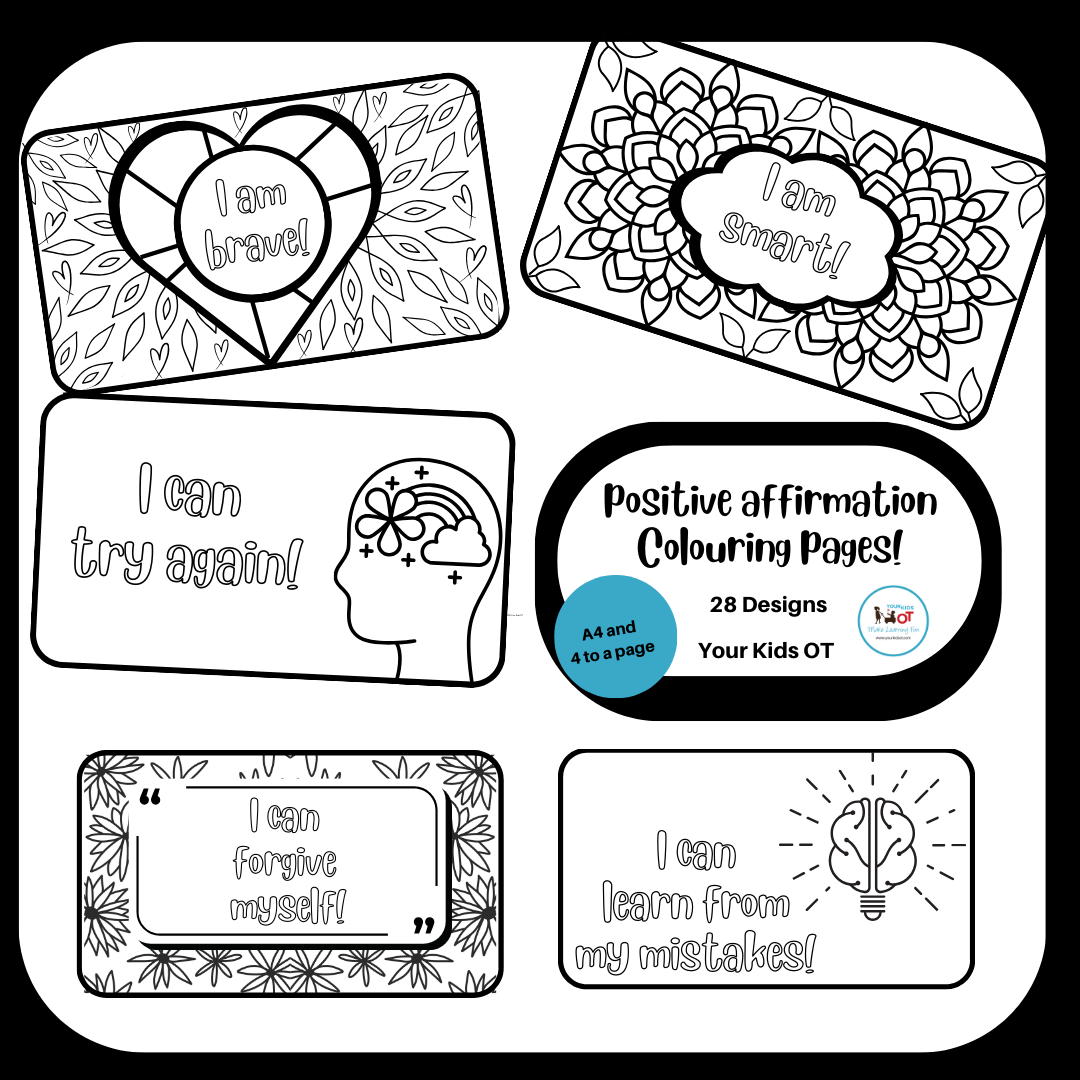

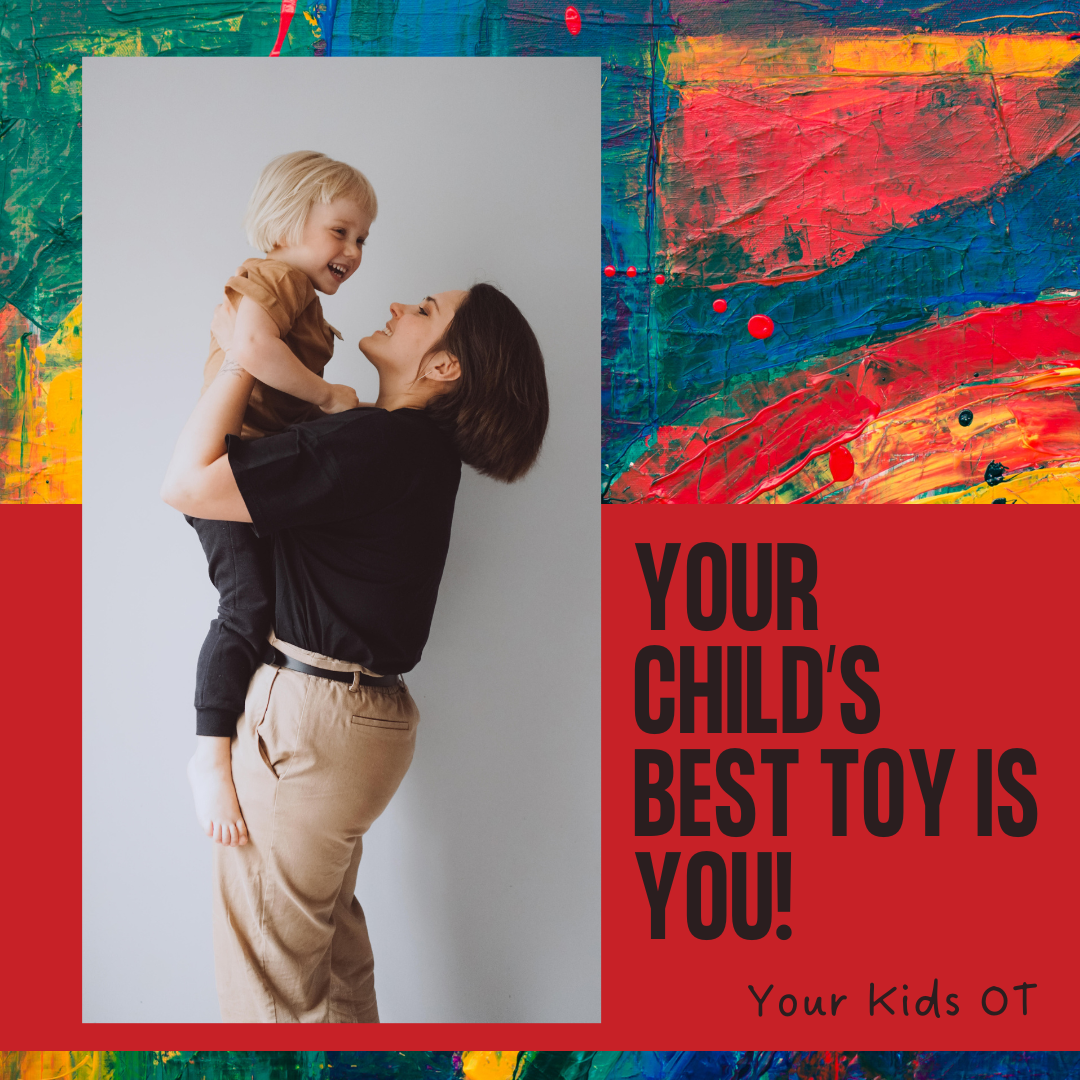
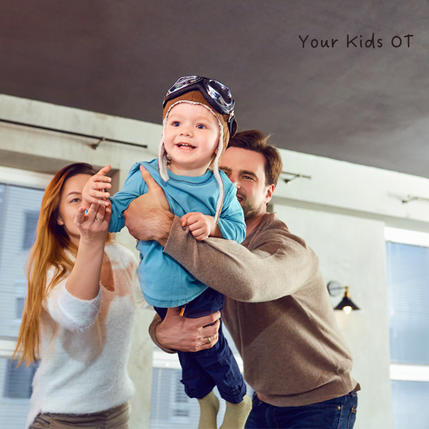

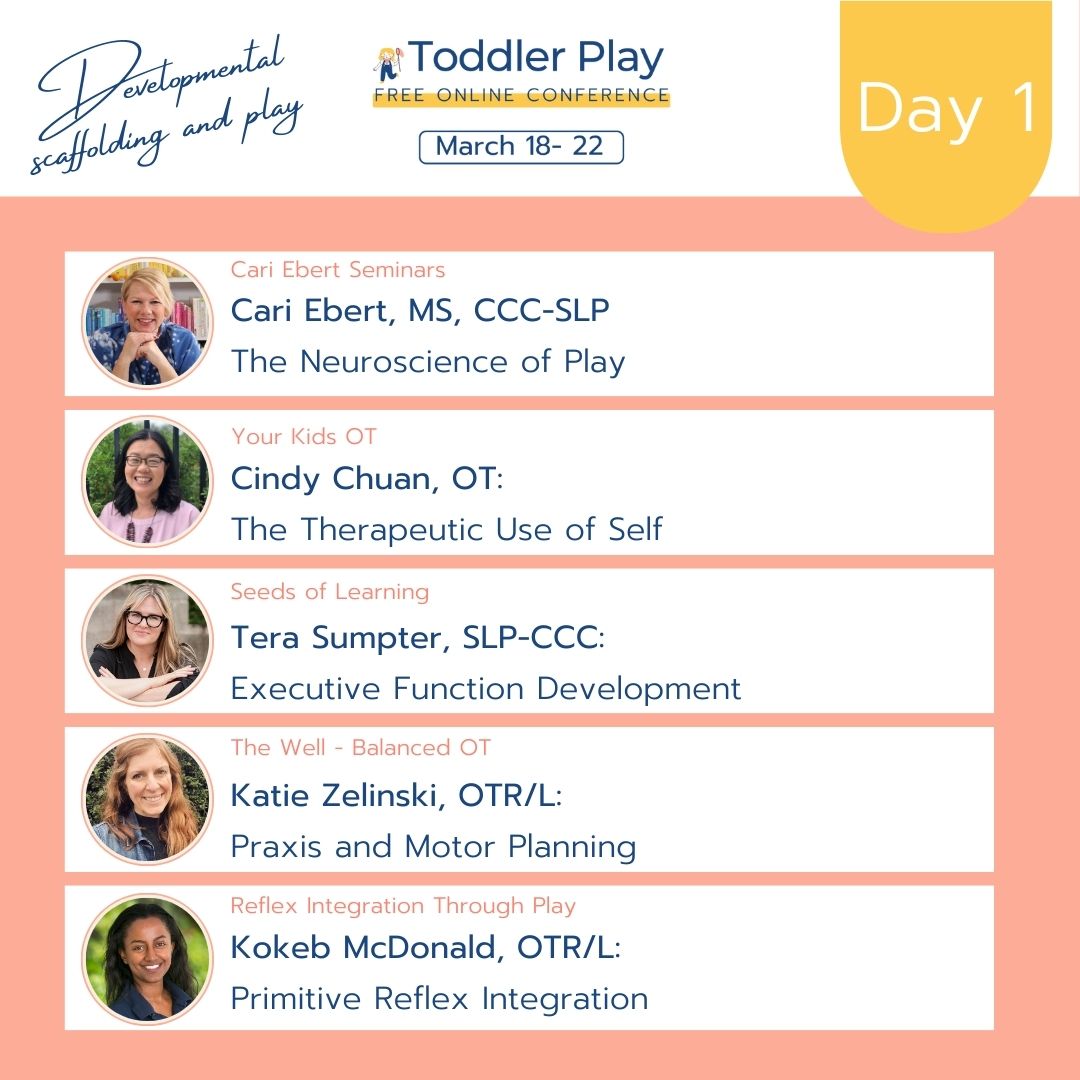
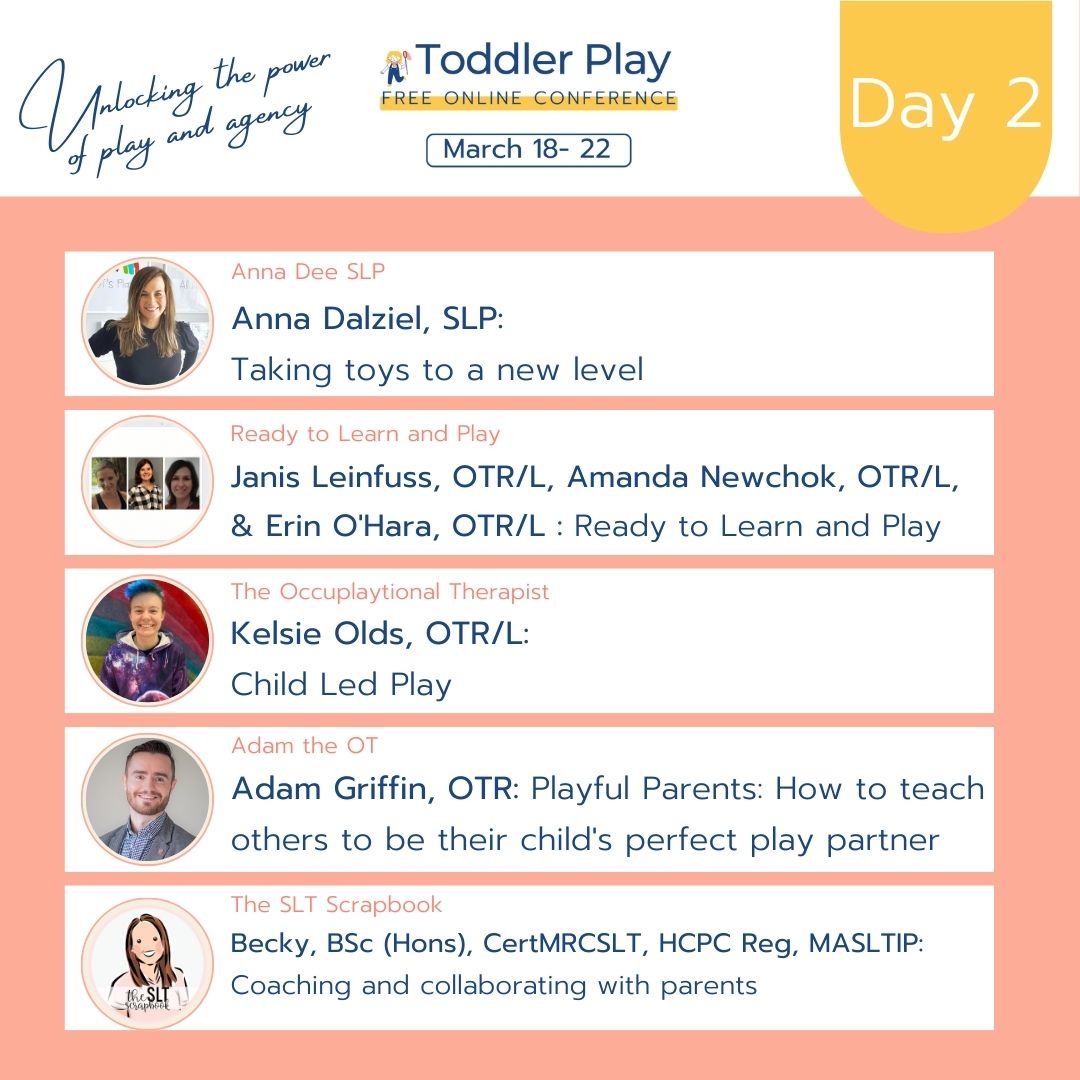
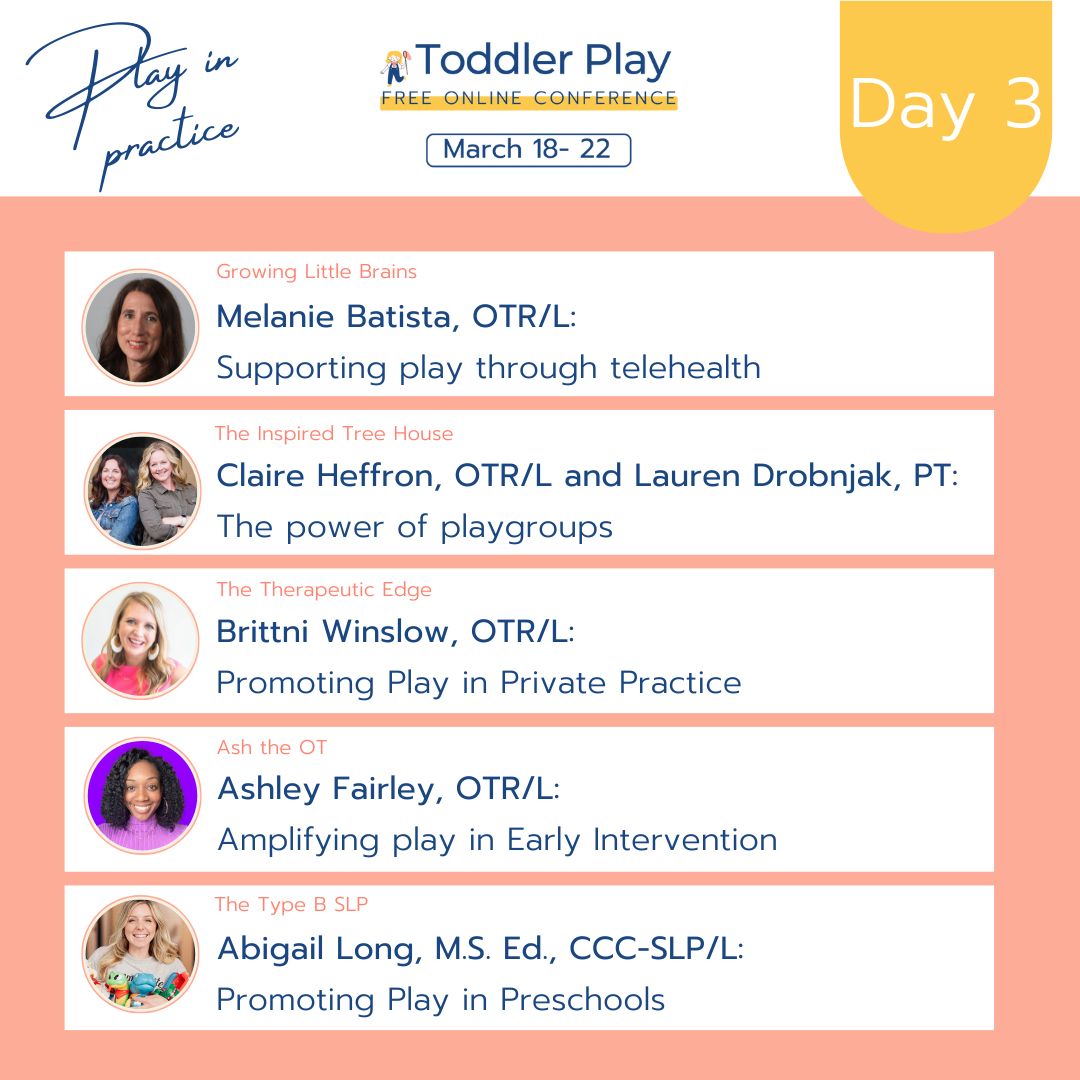
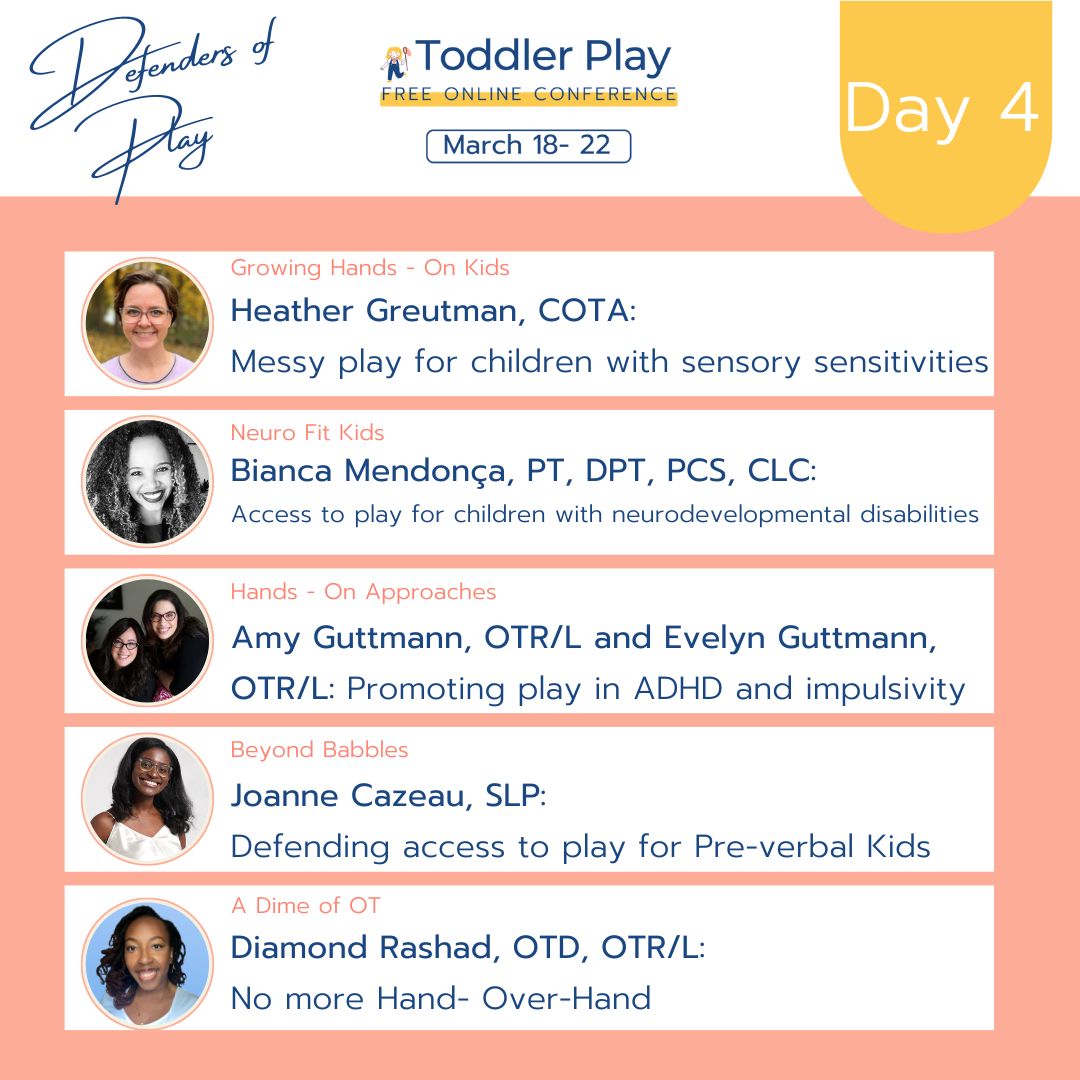
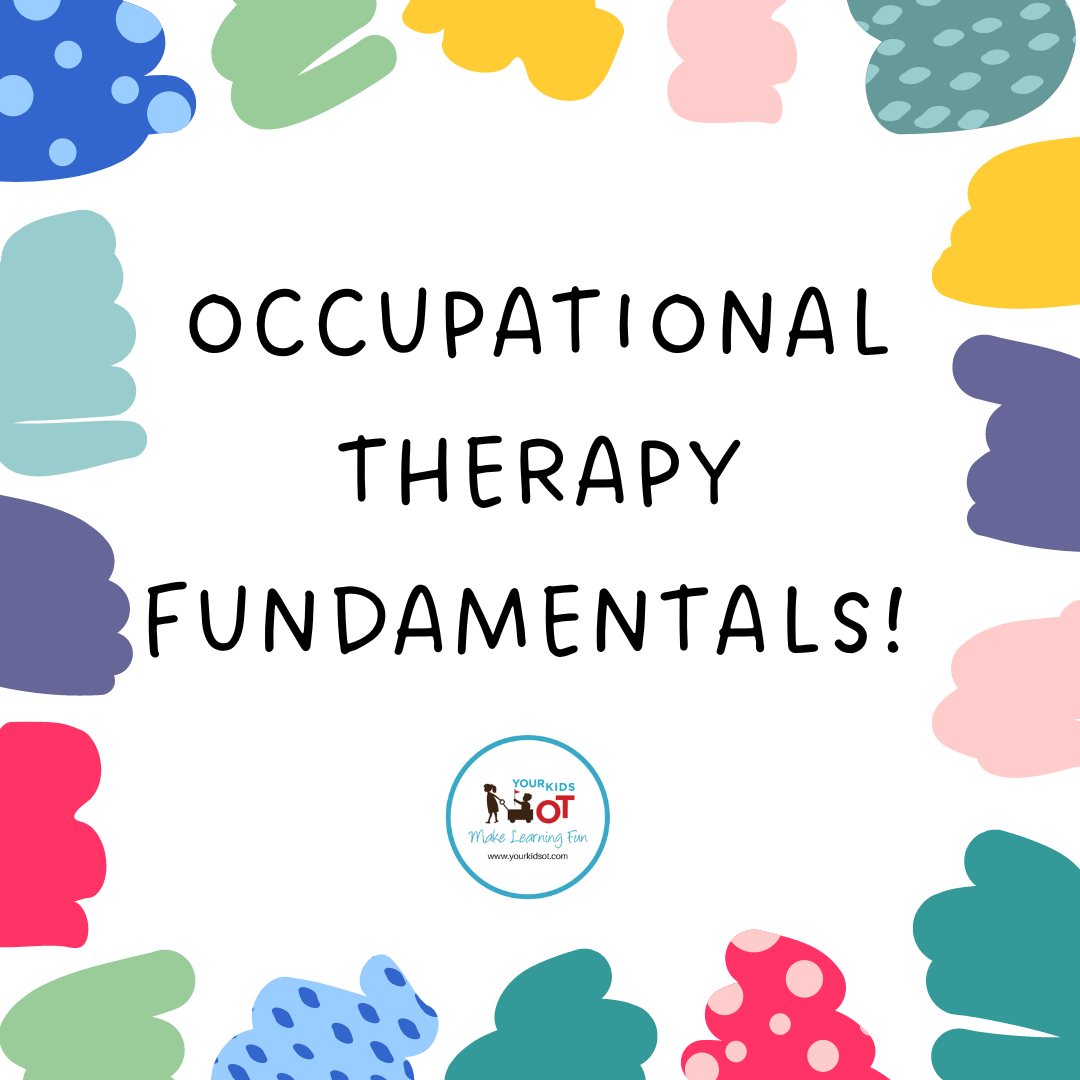
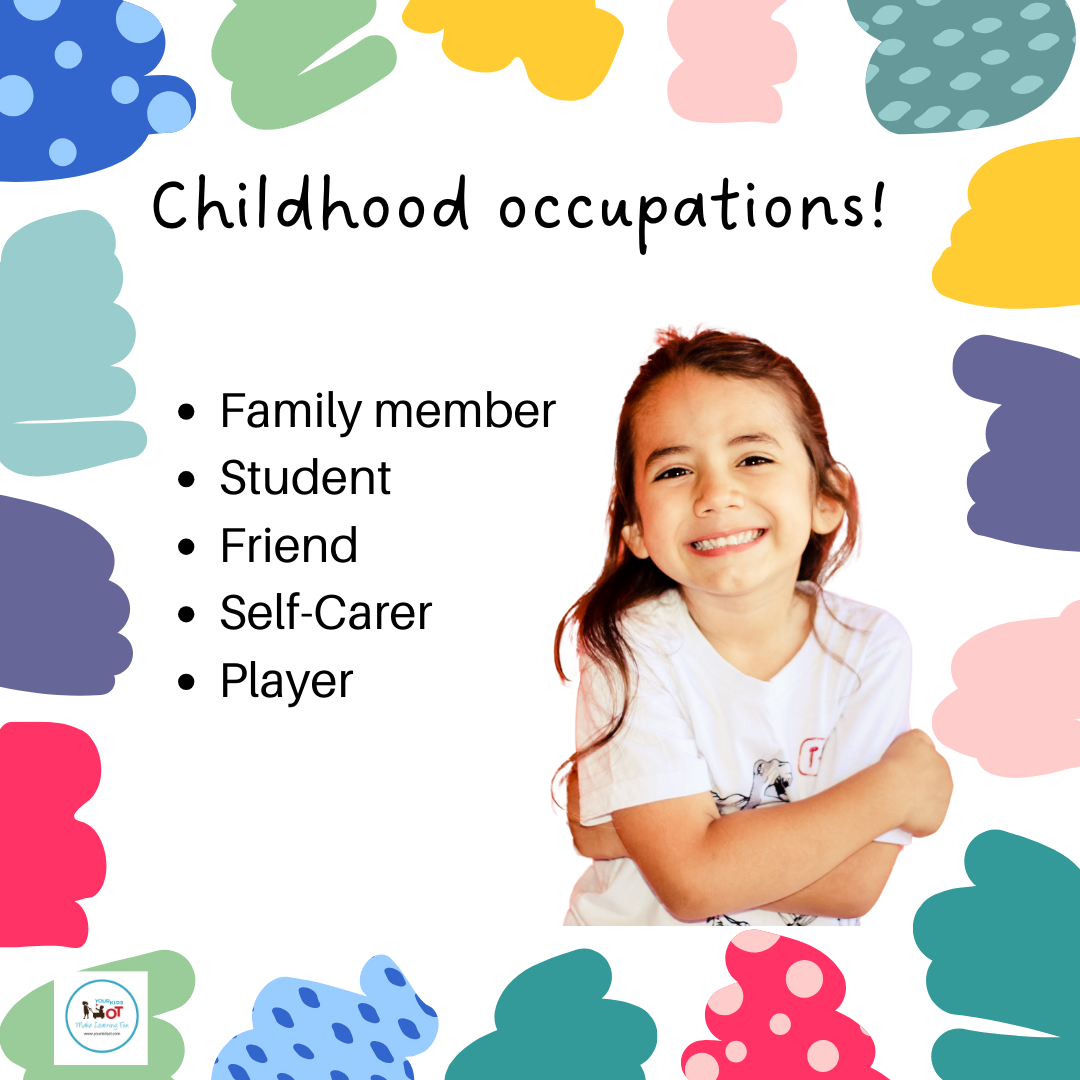
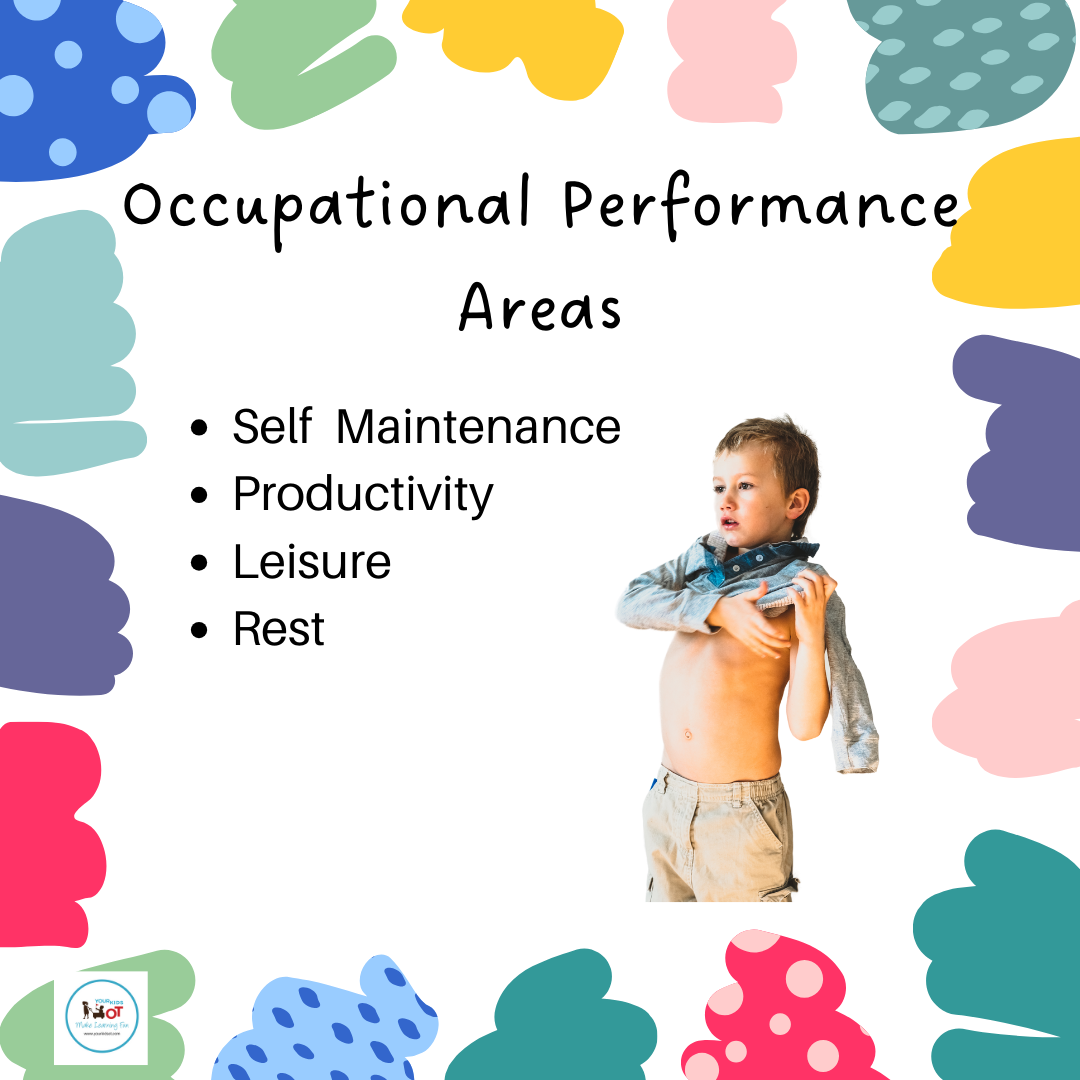
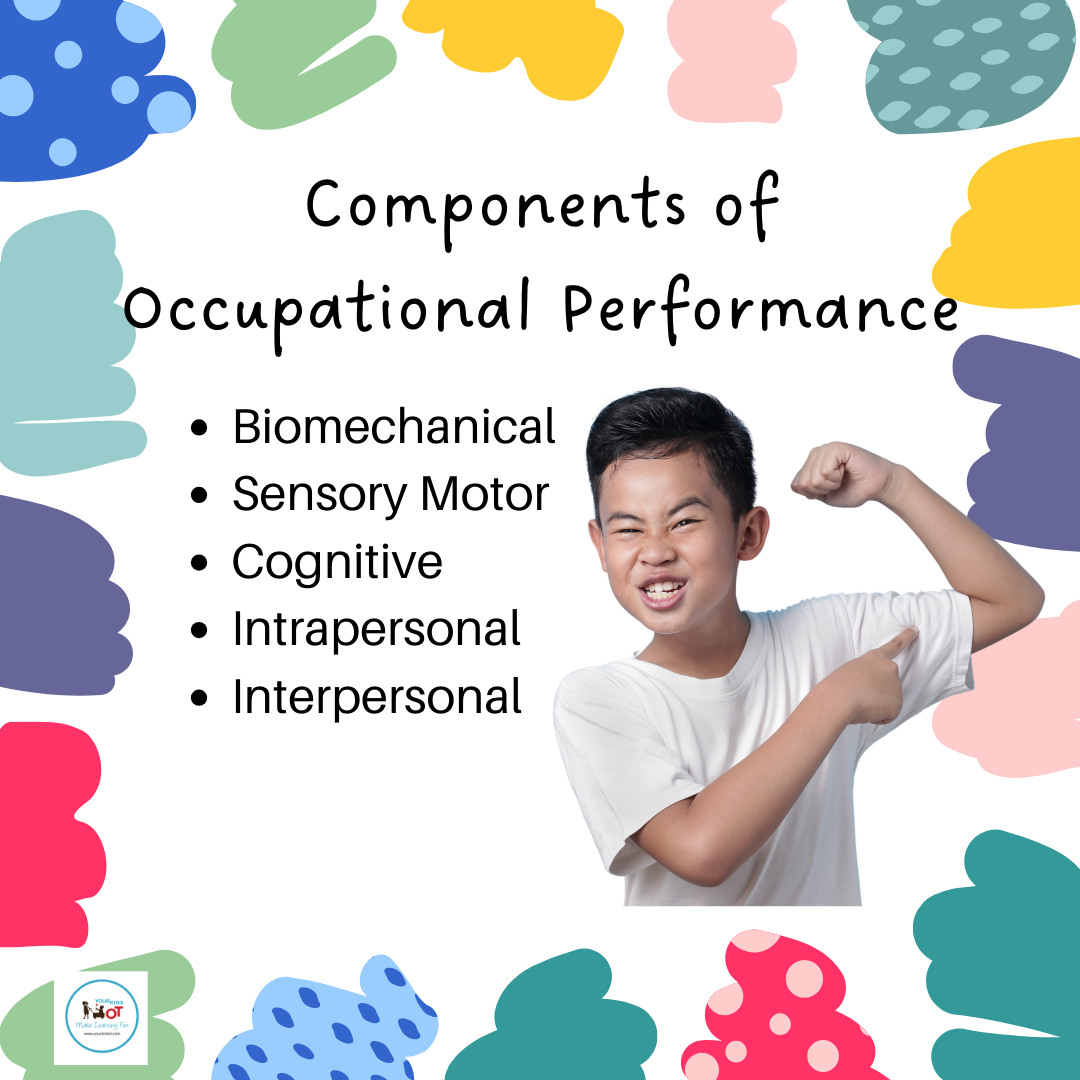

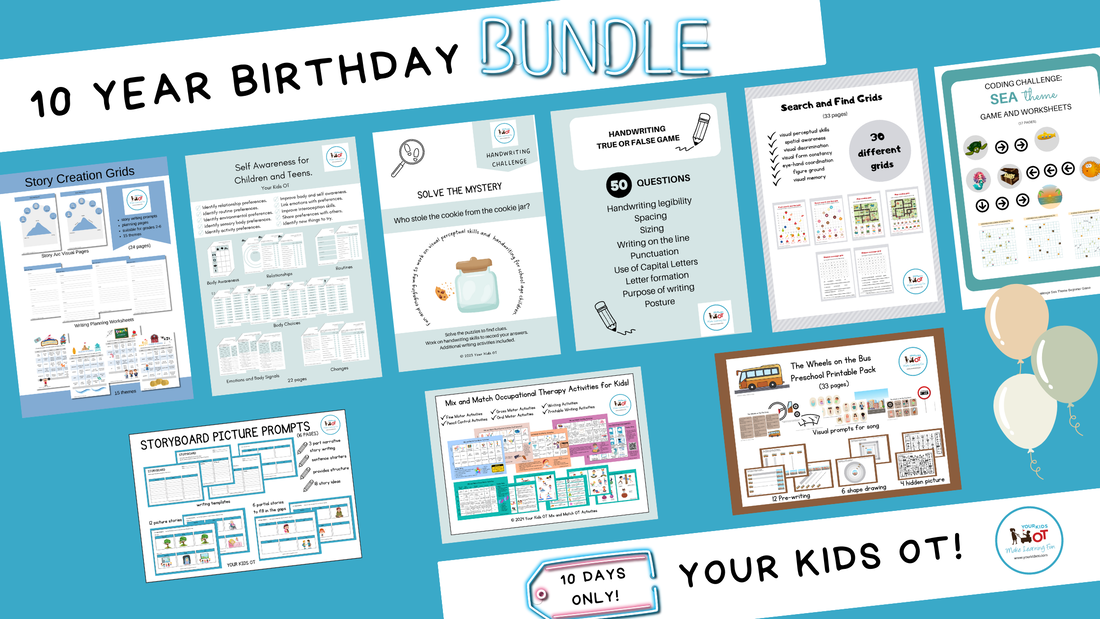

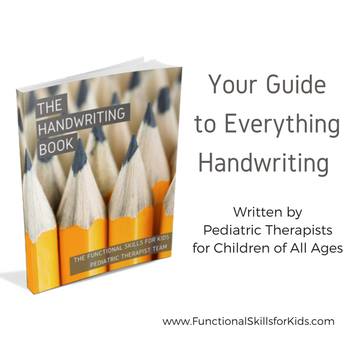
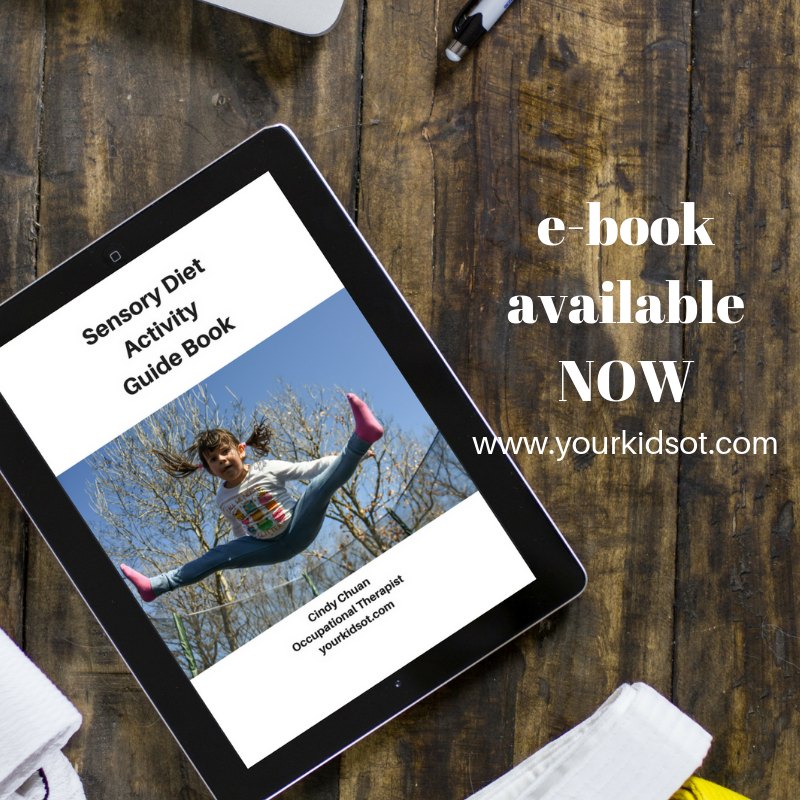
 RSS Feed
RSS Feed
